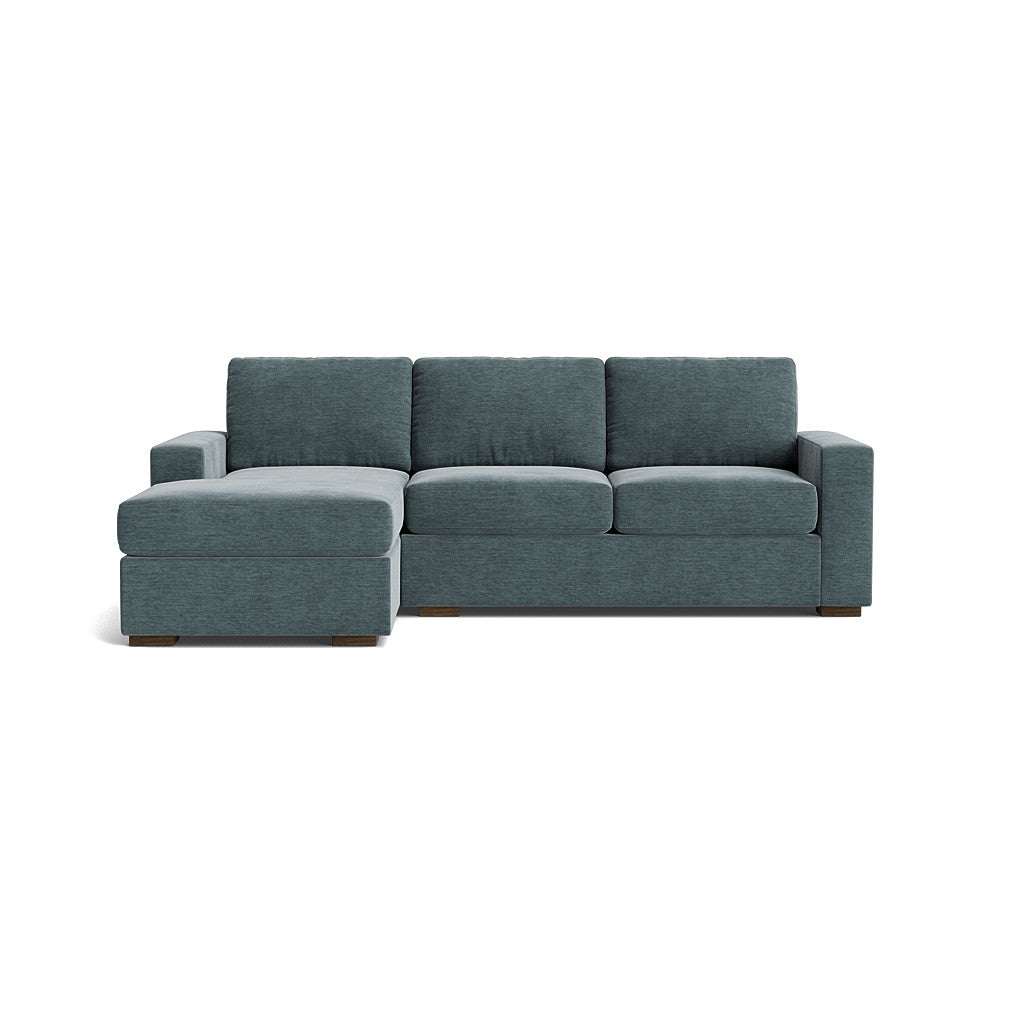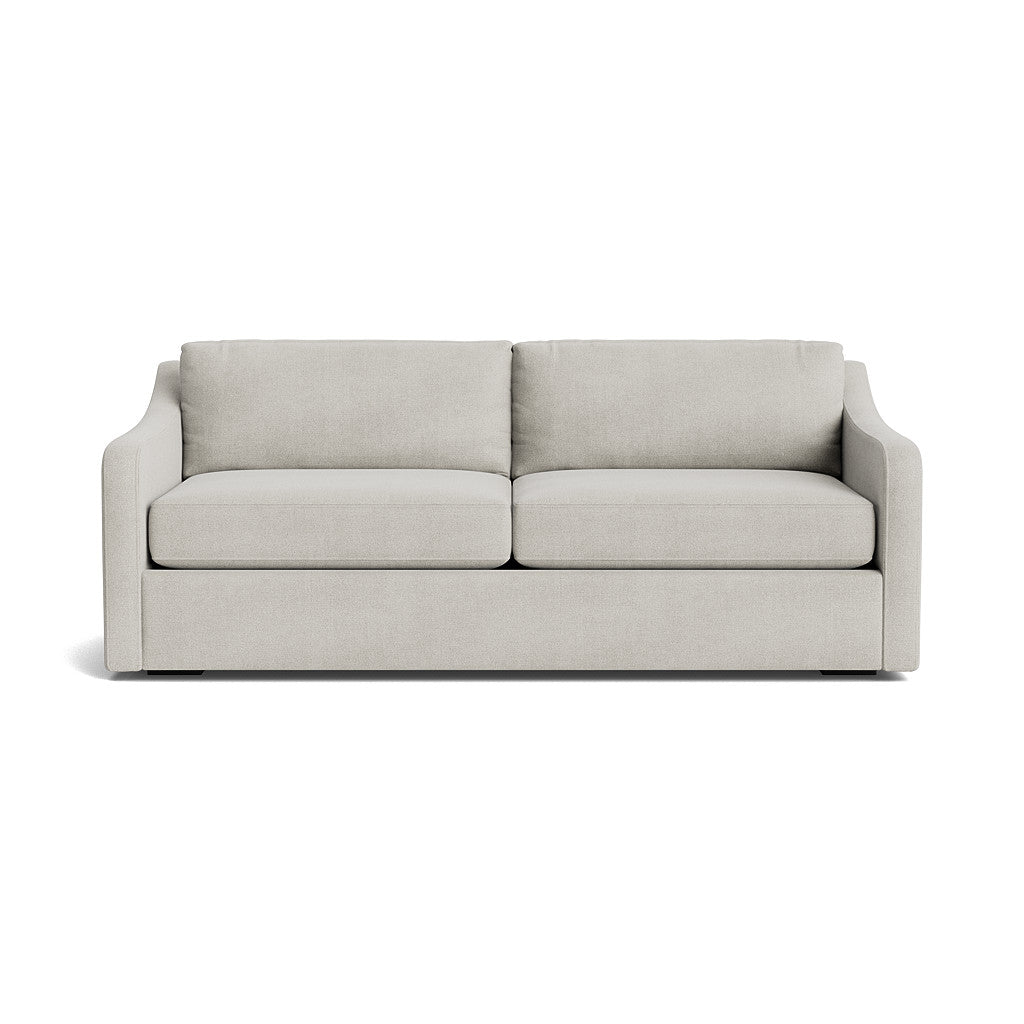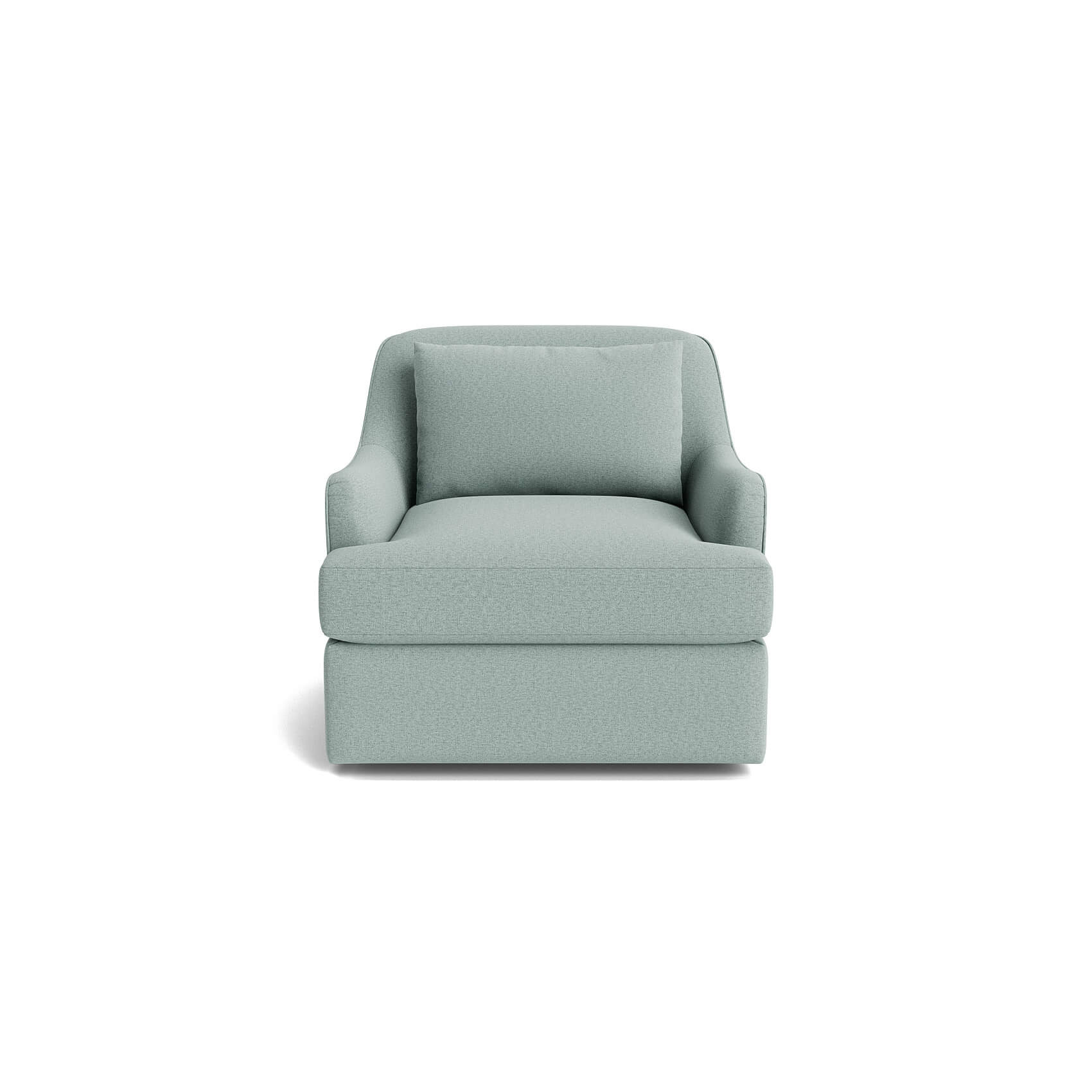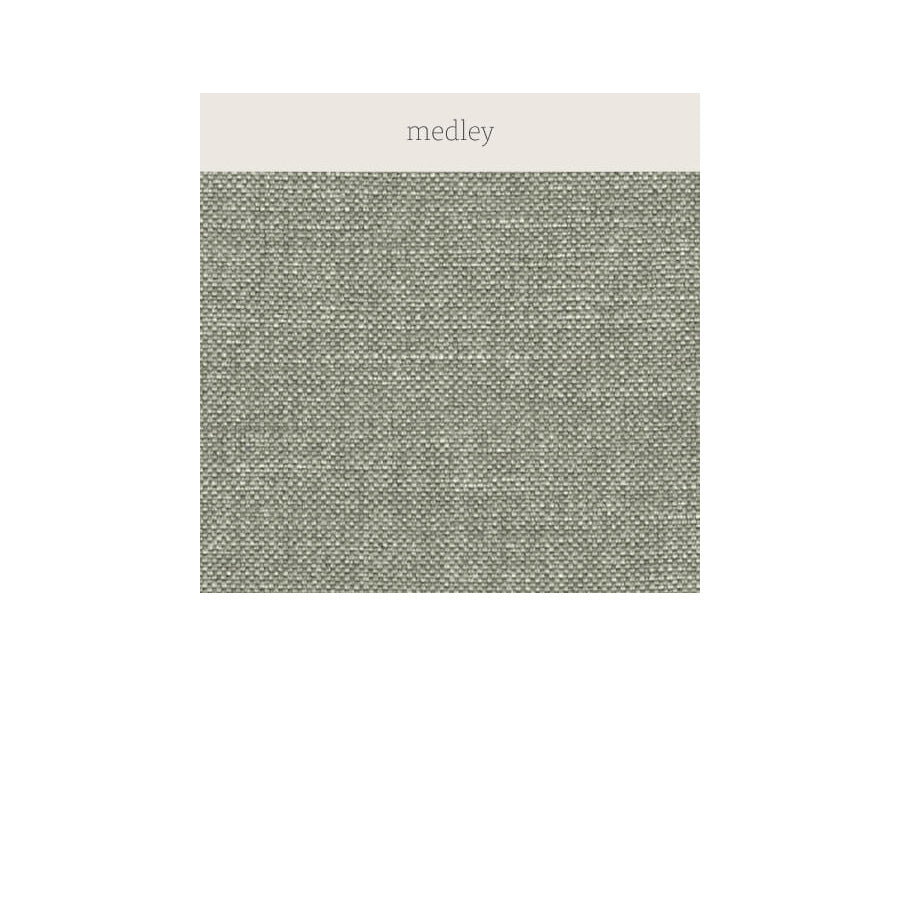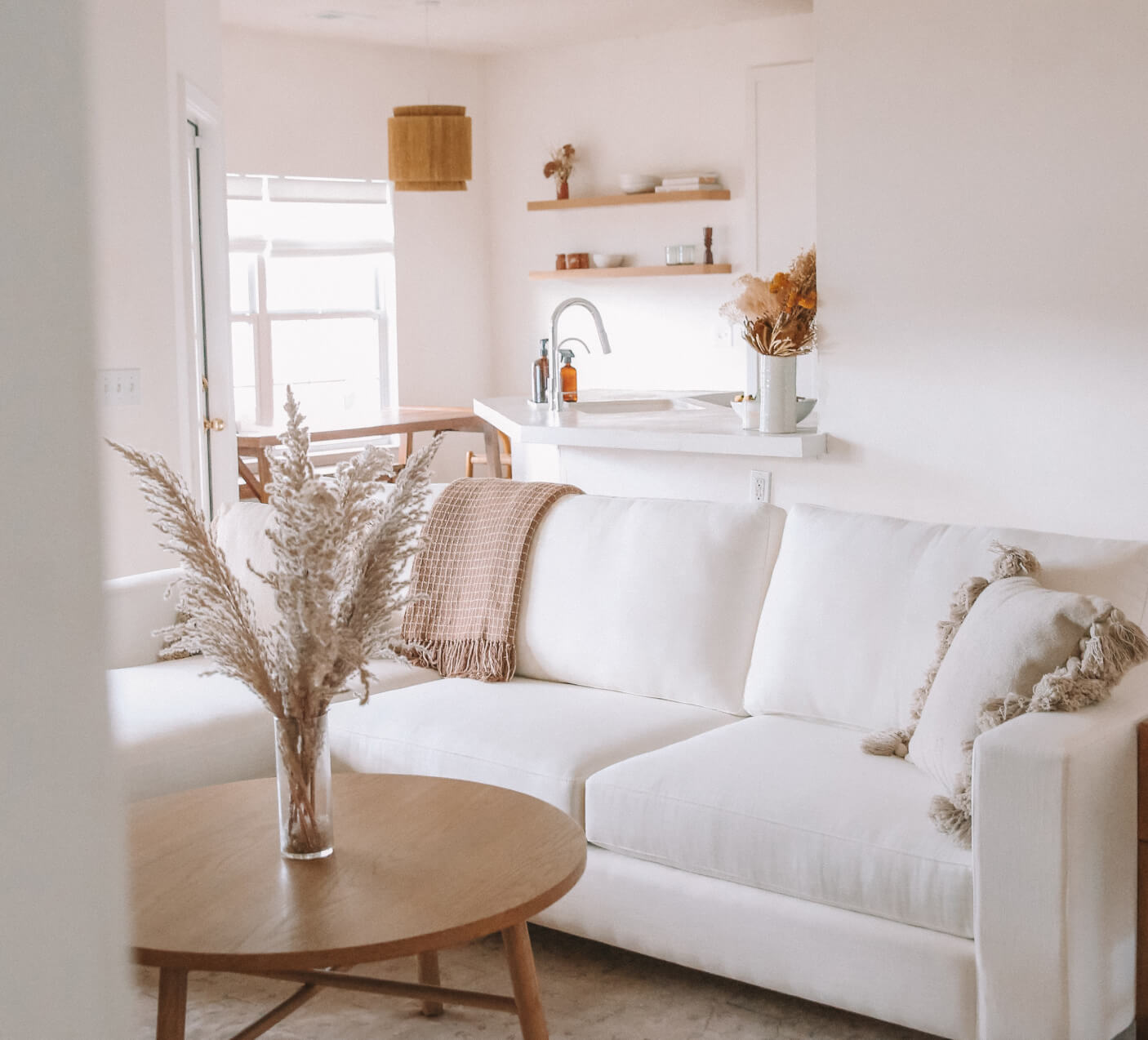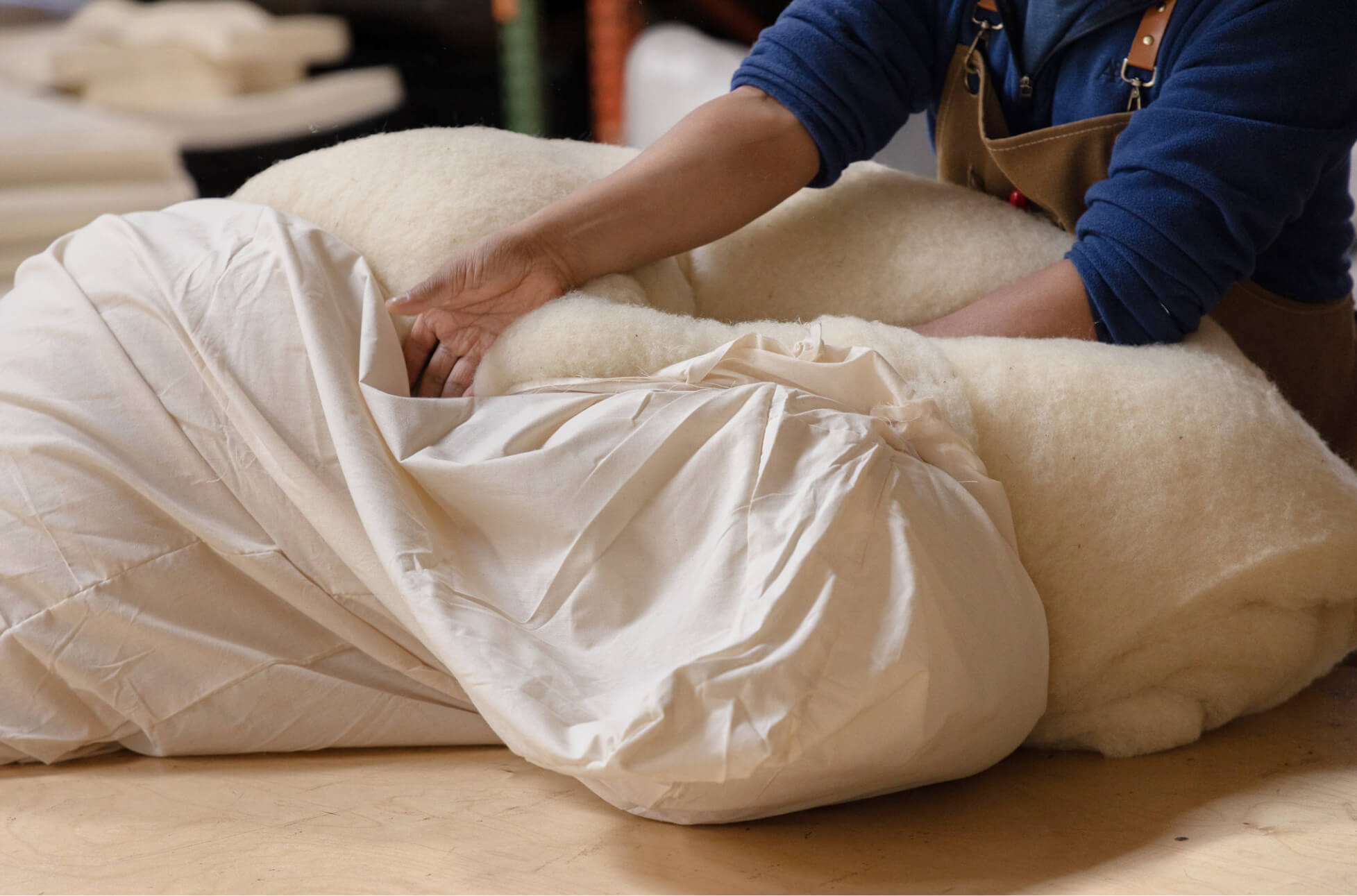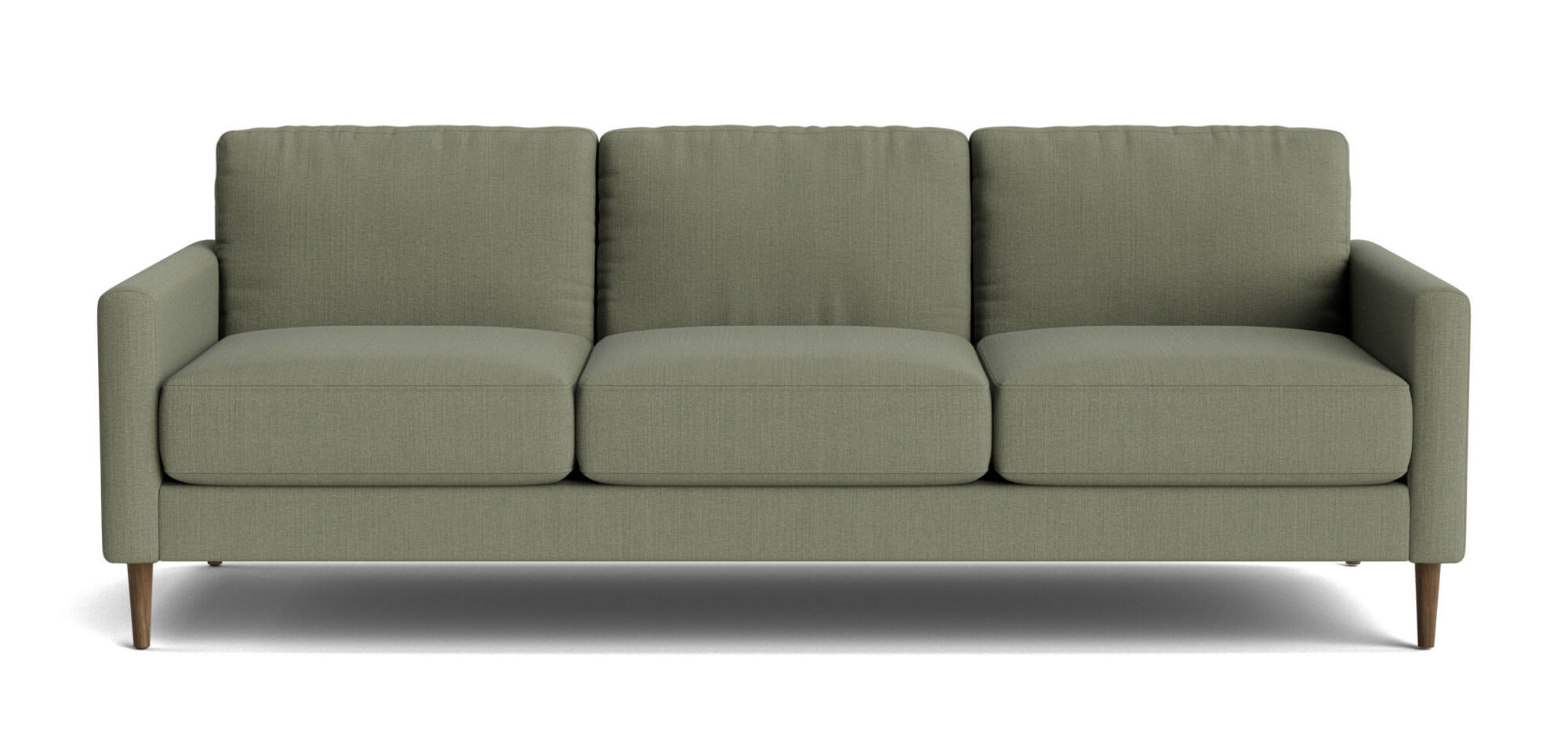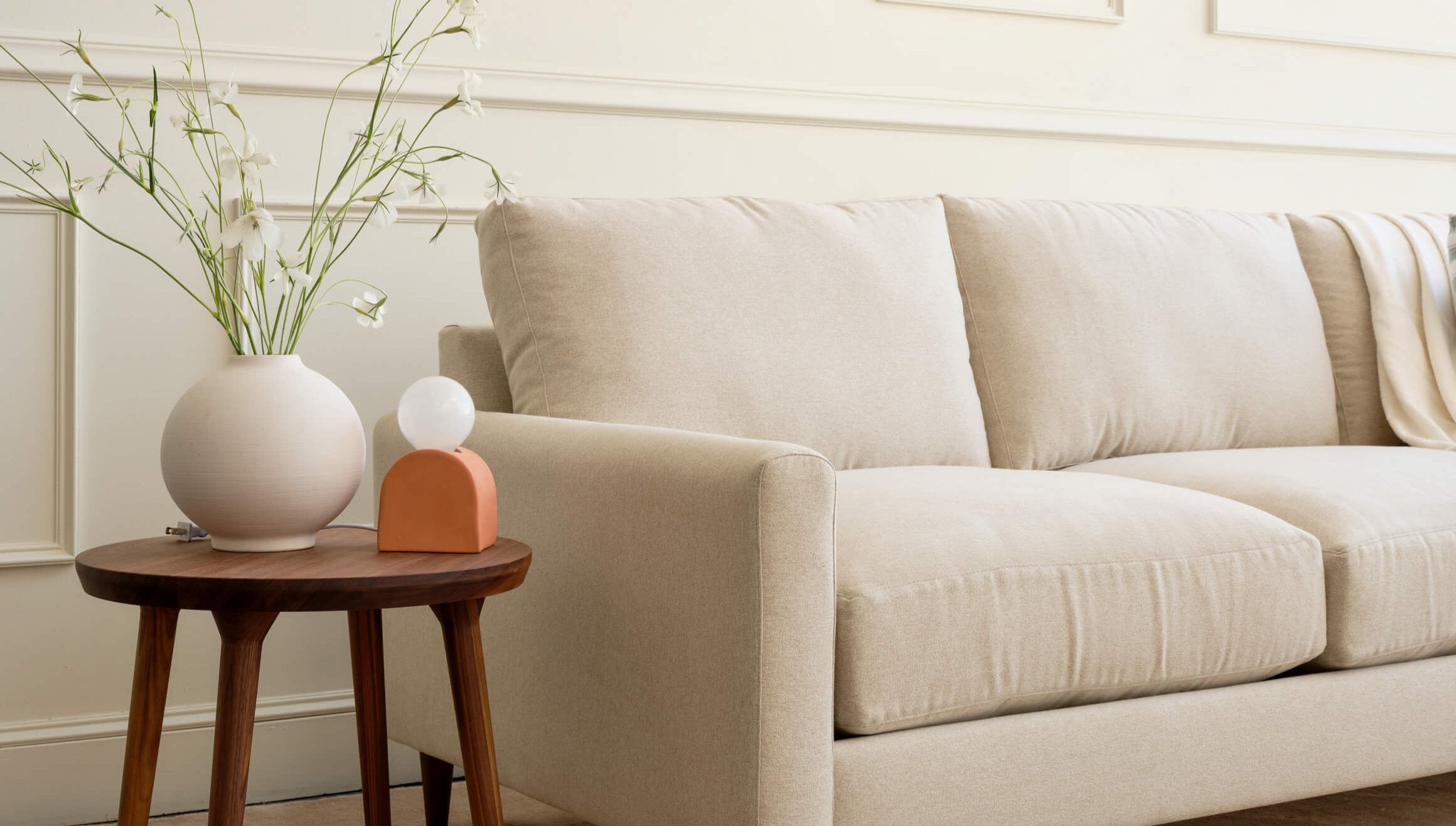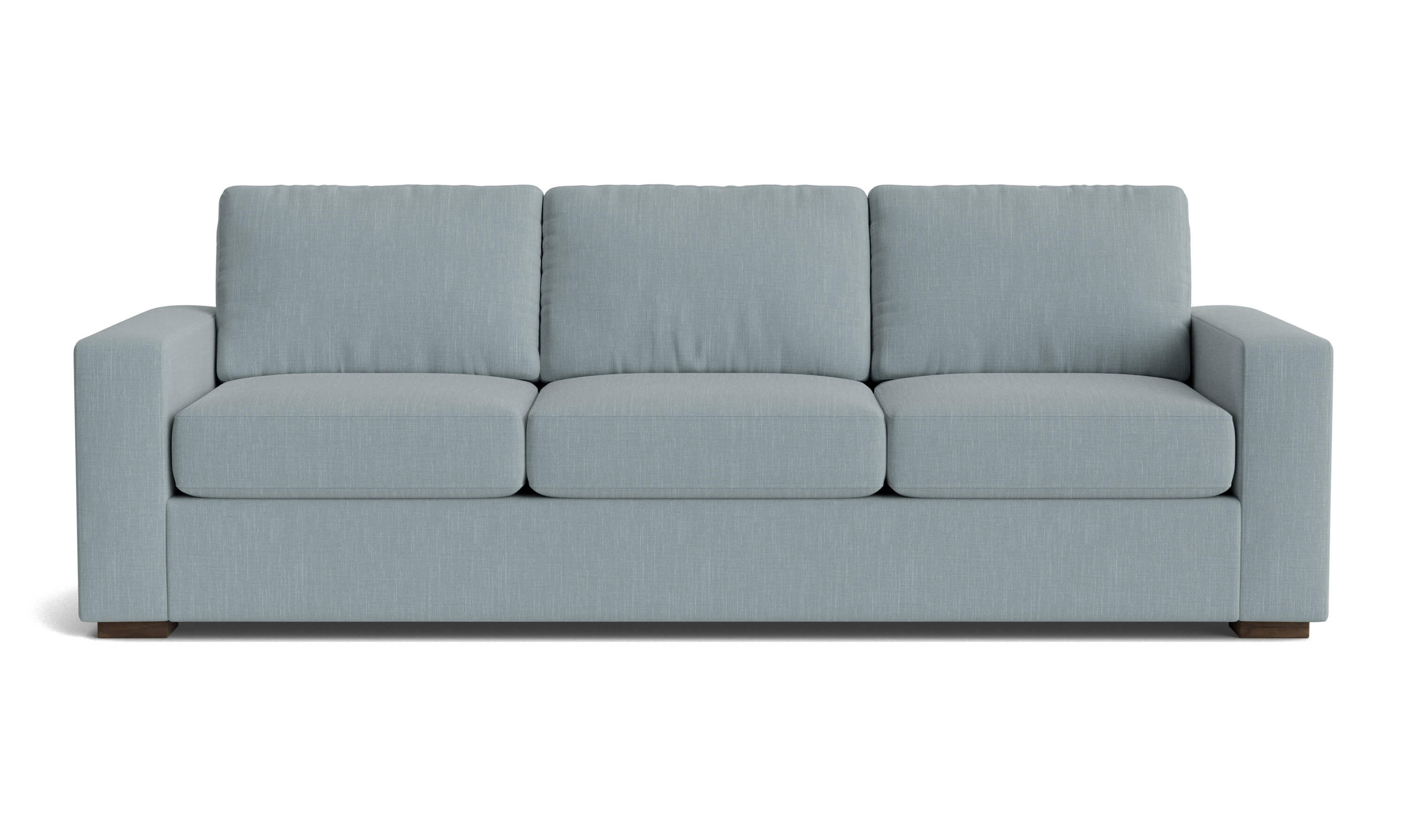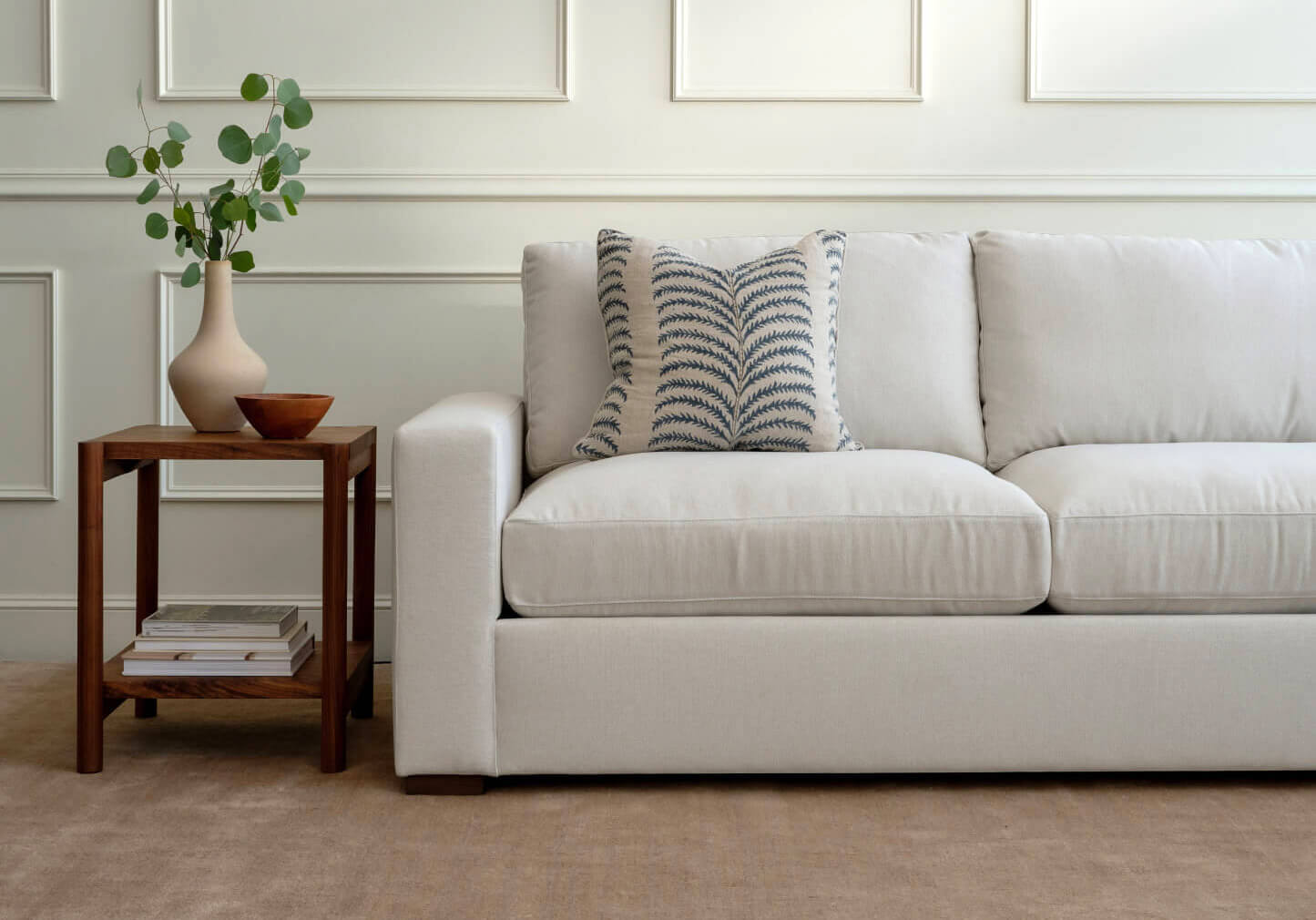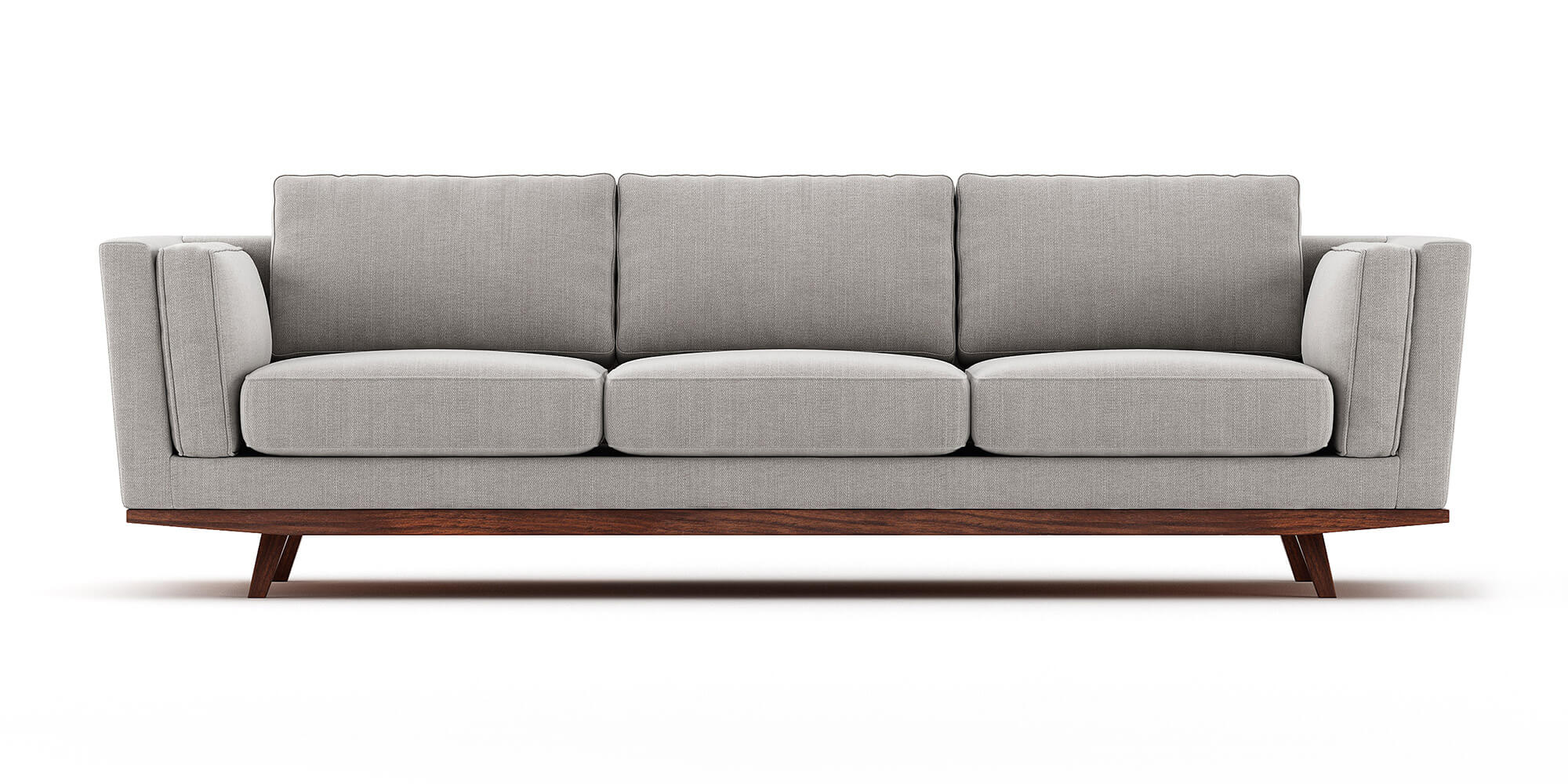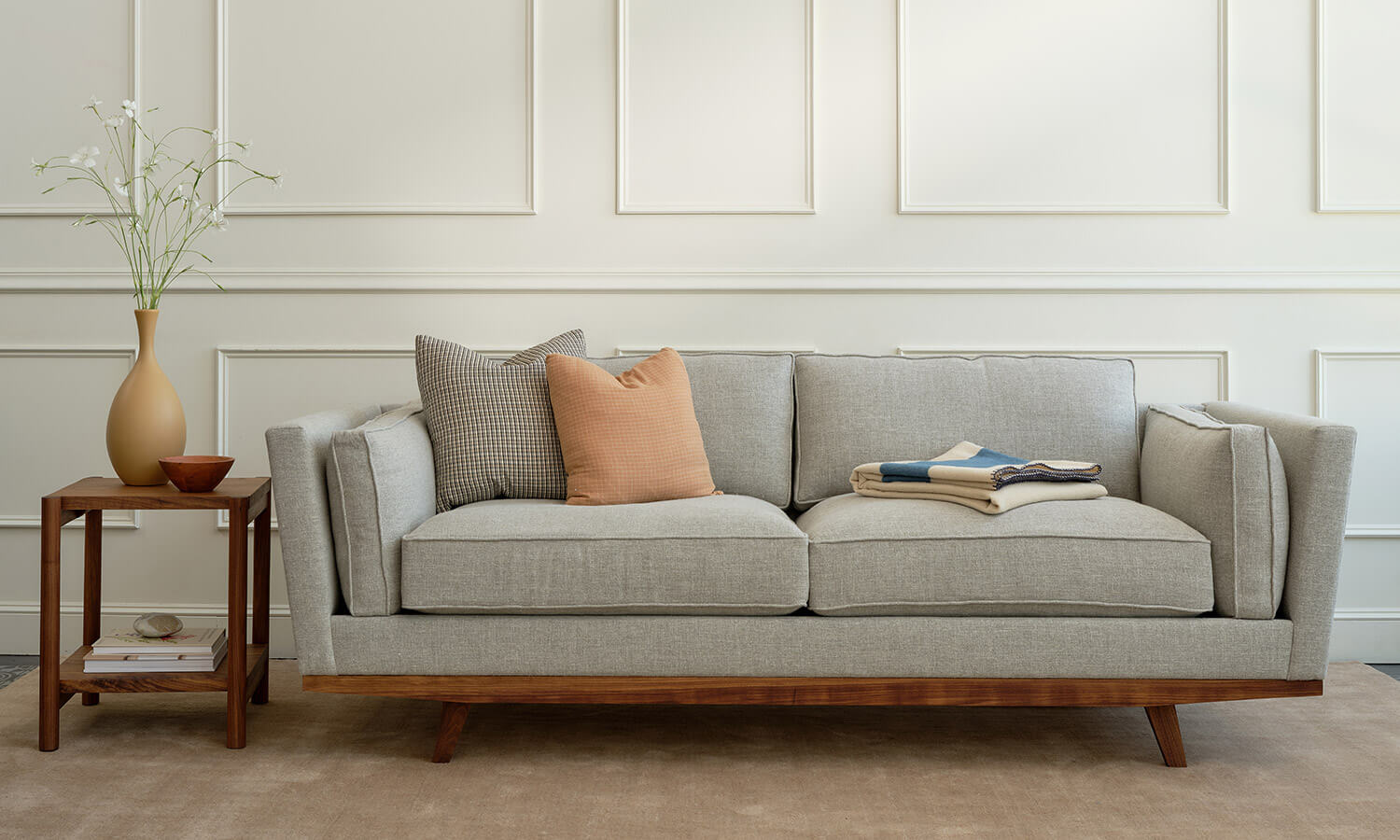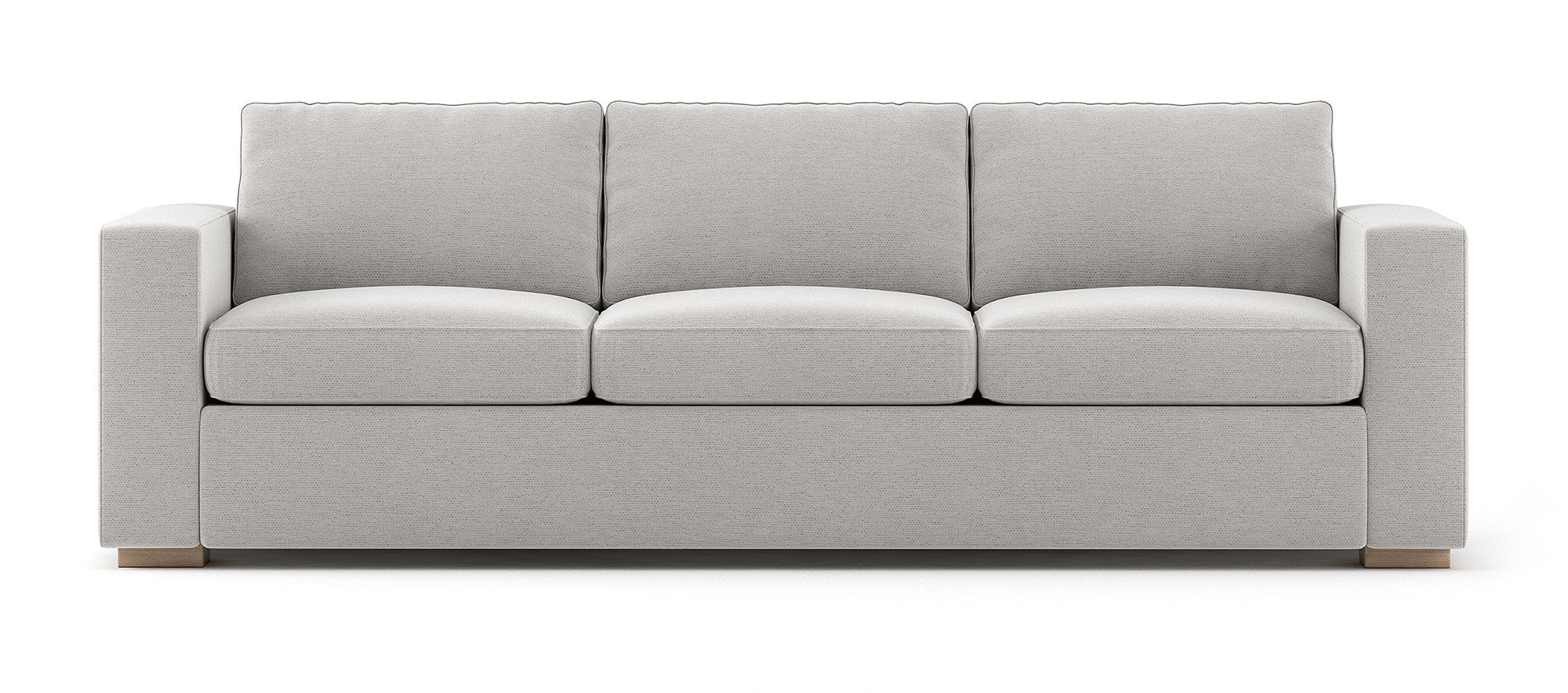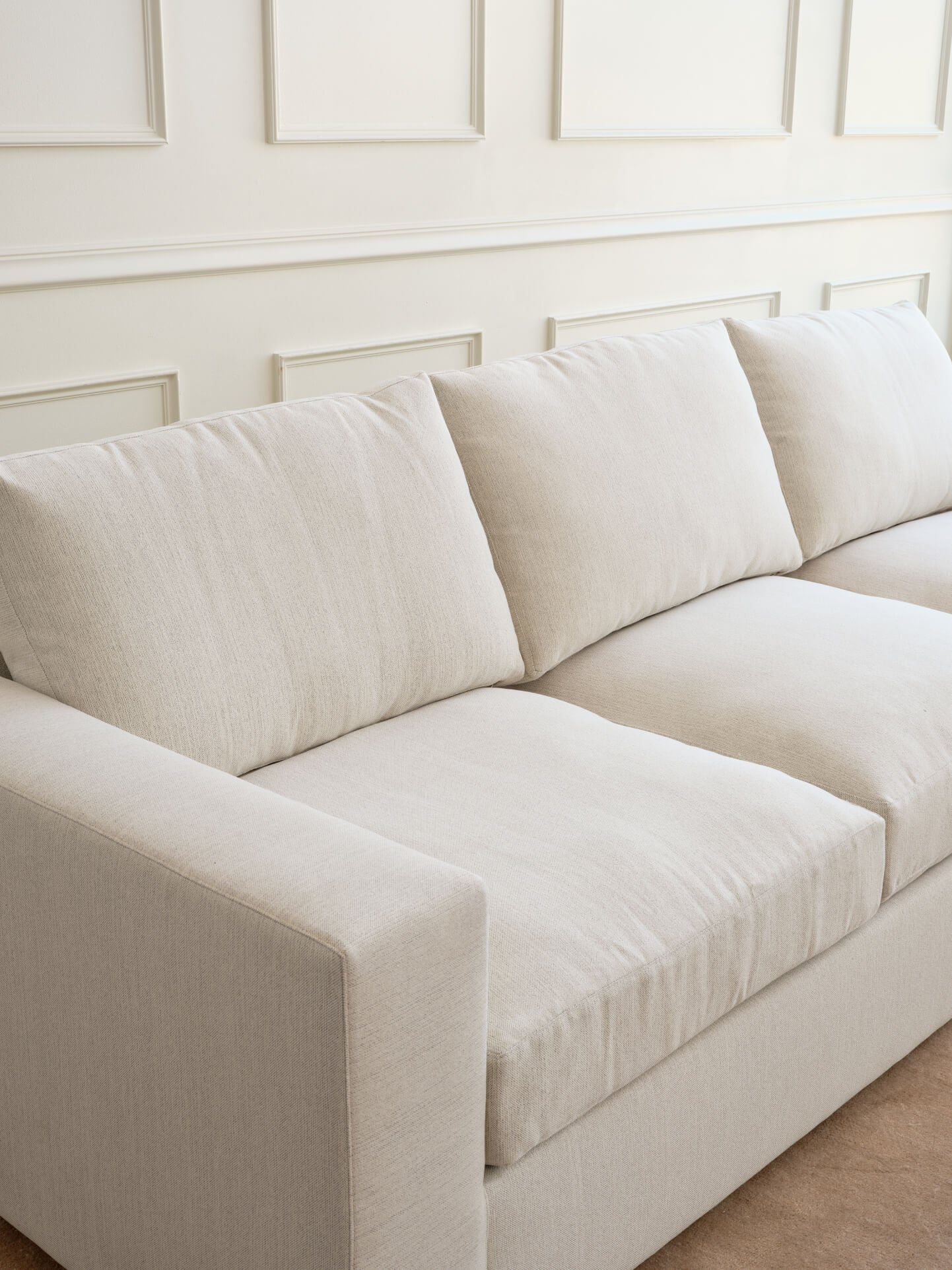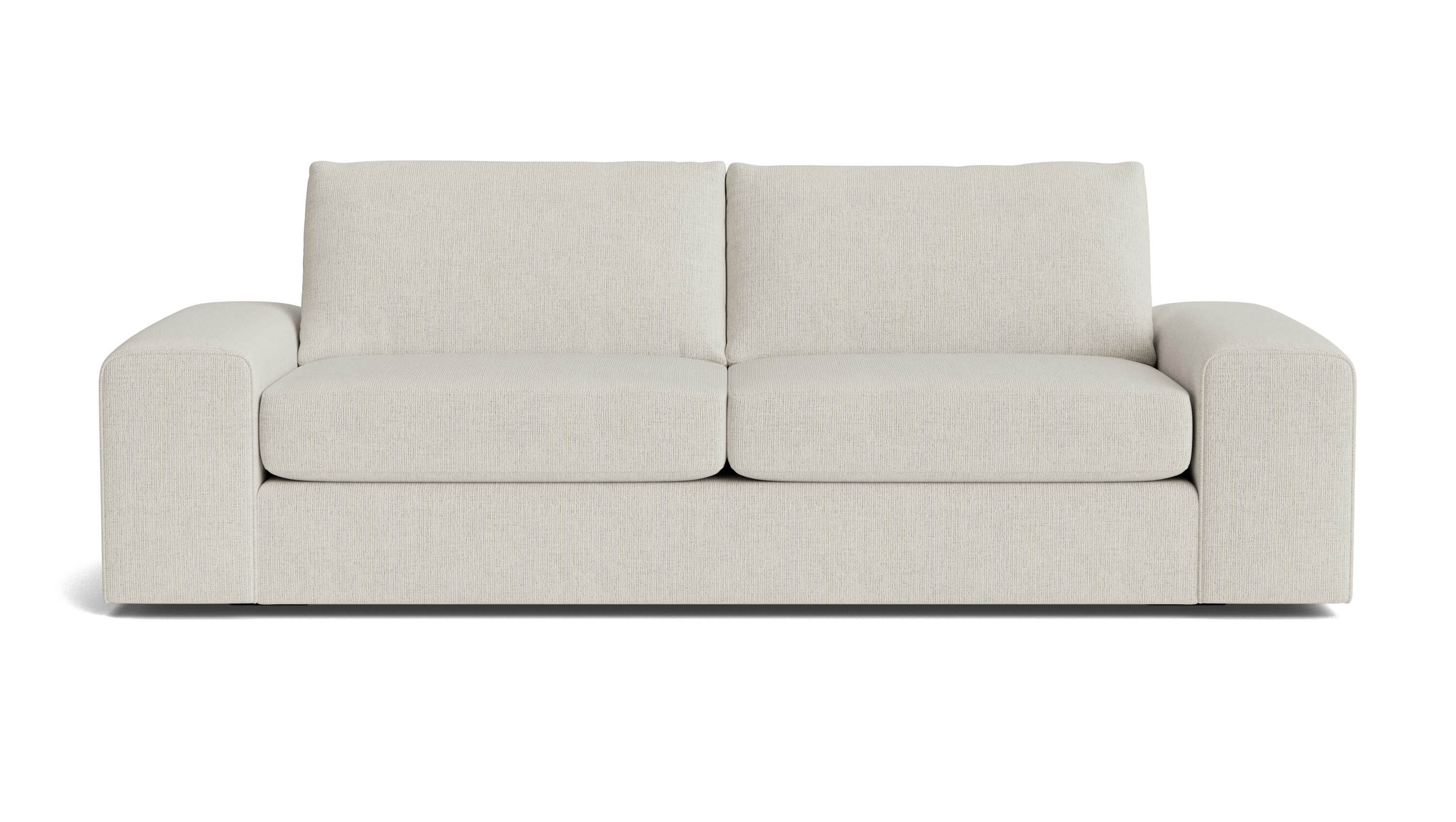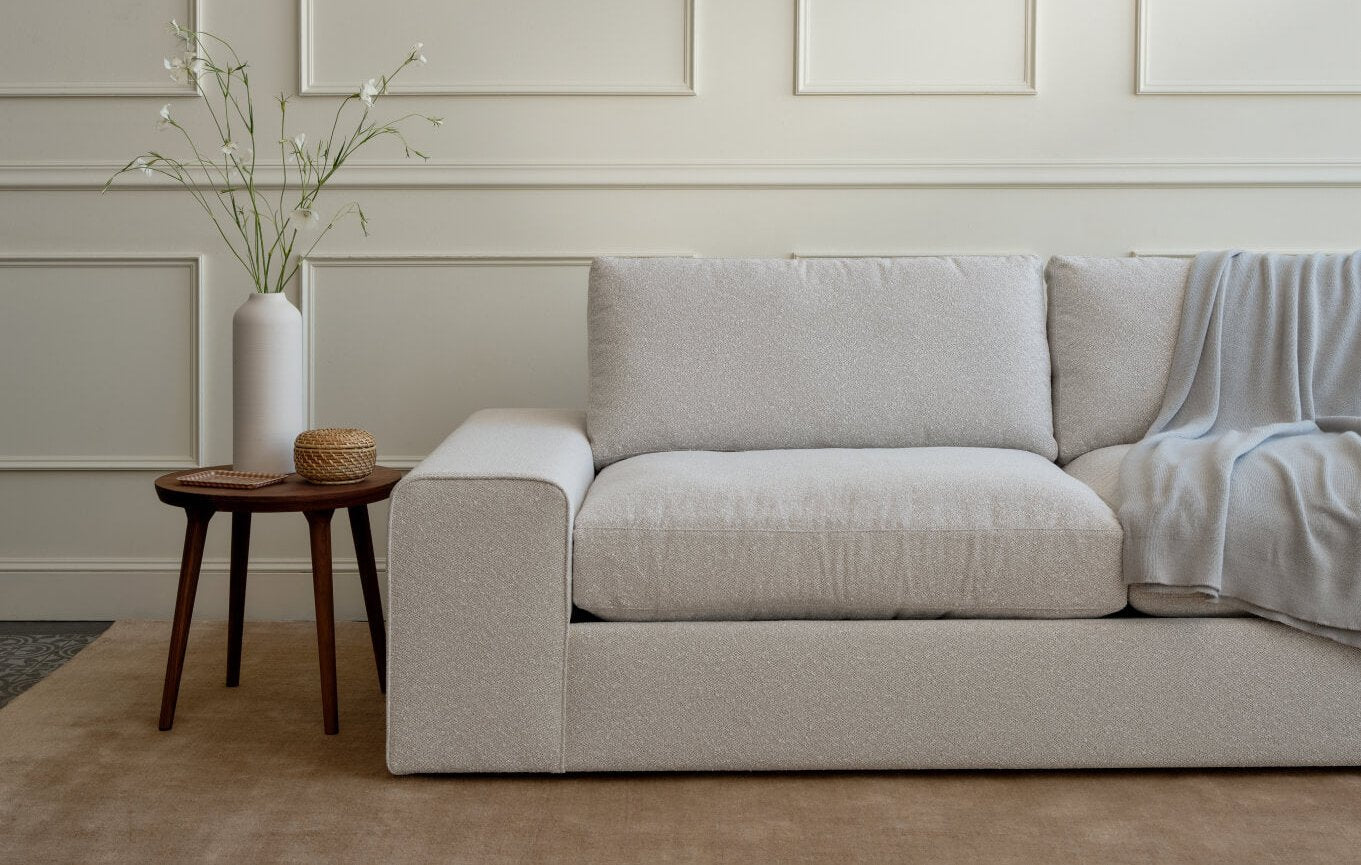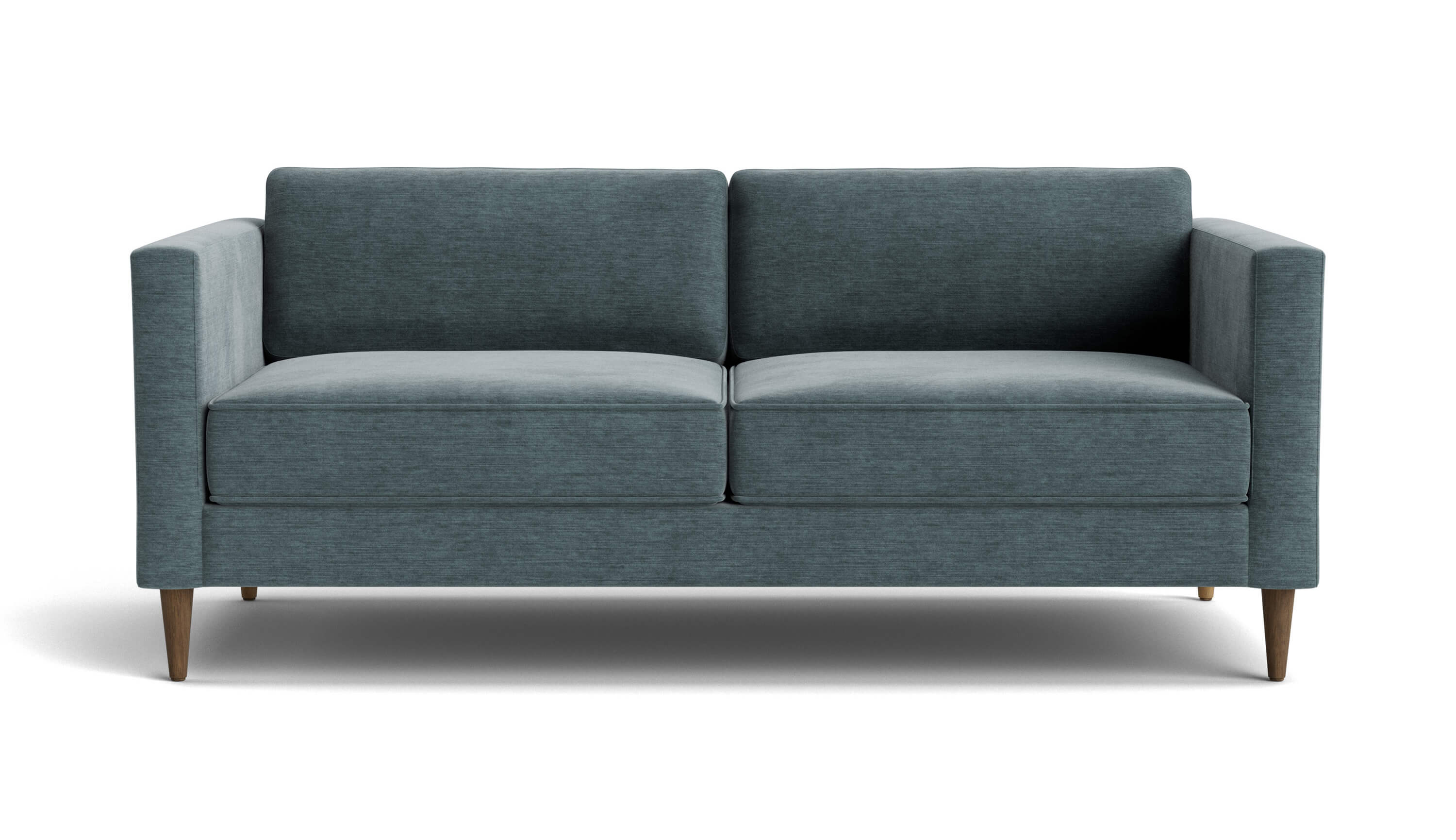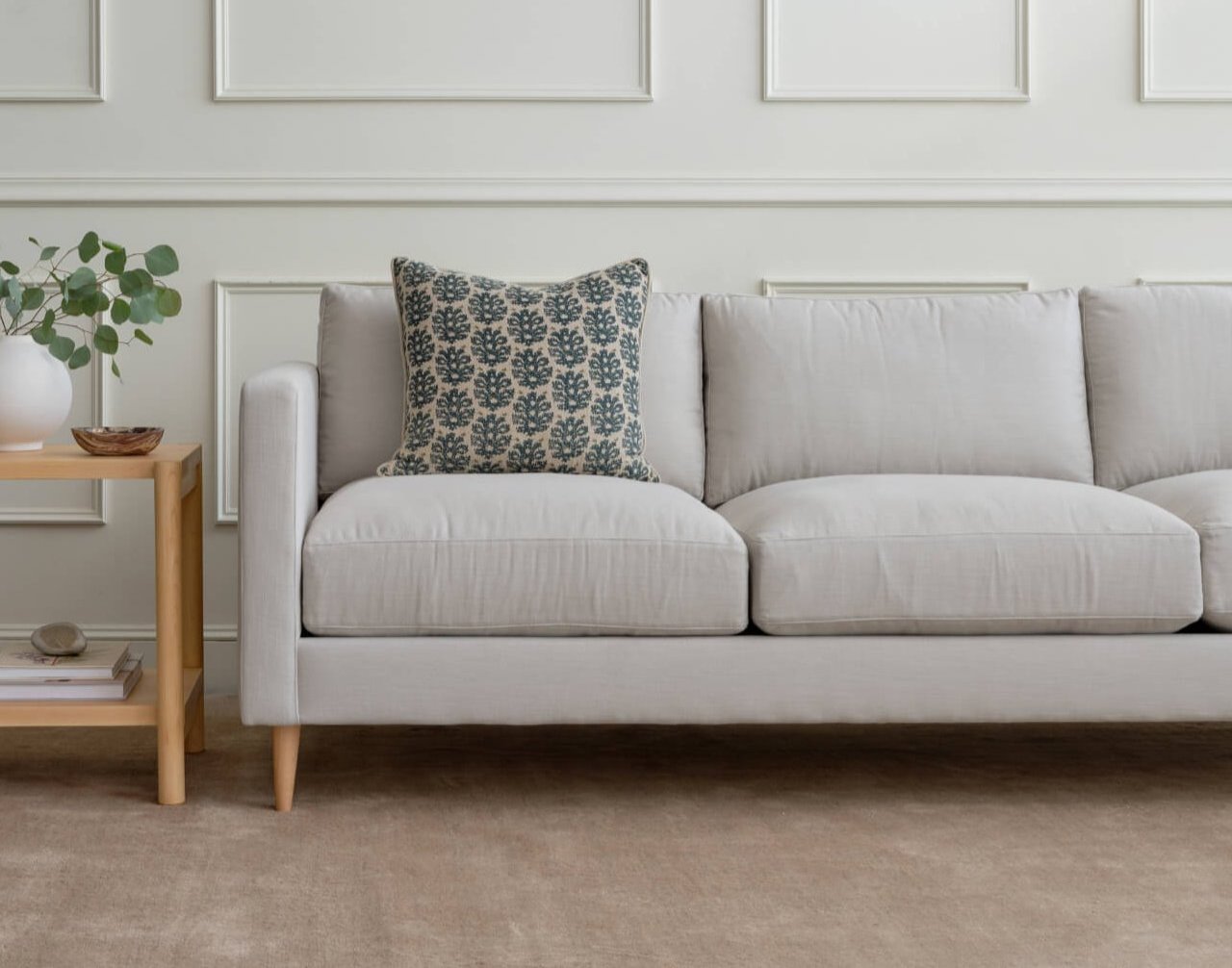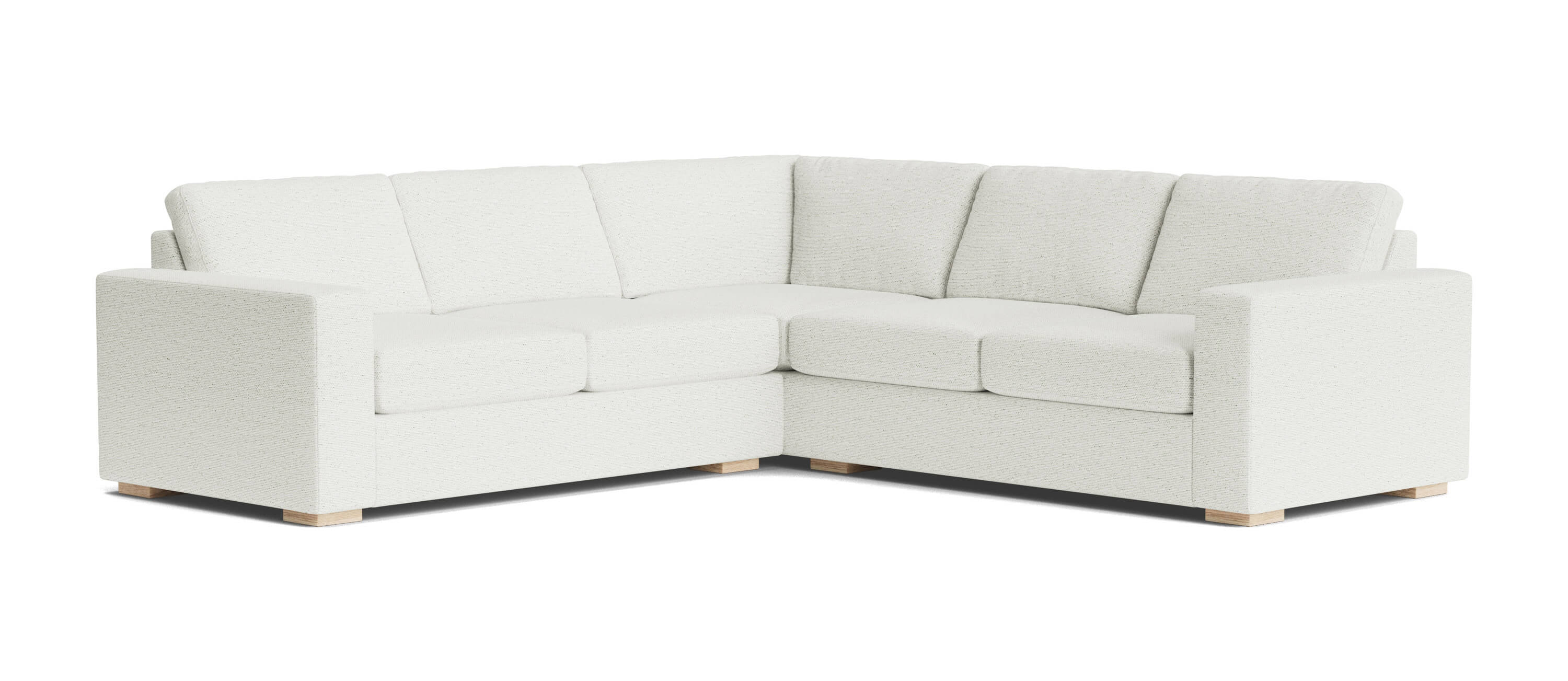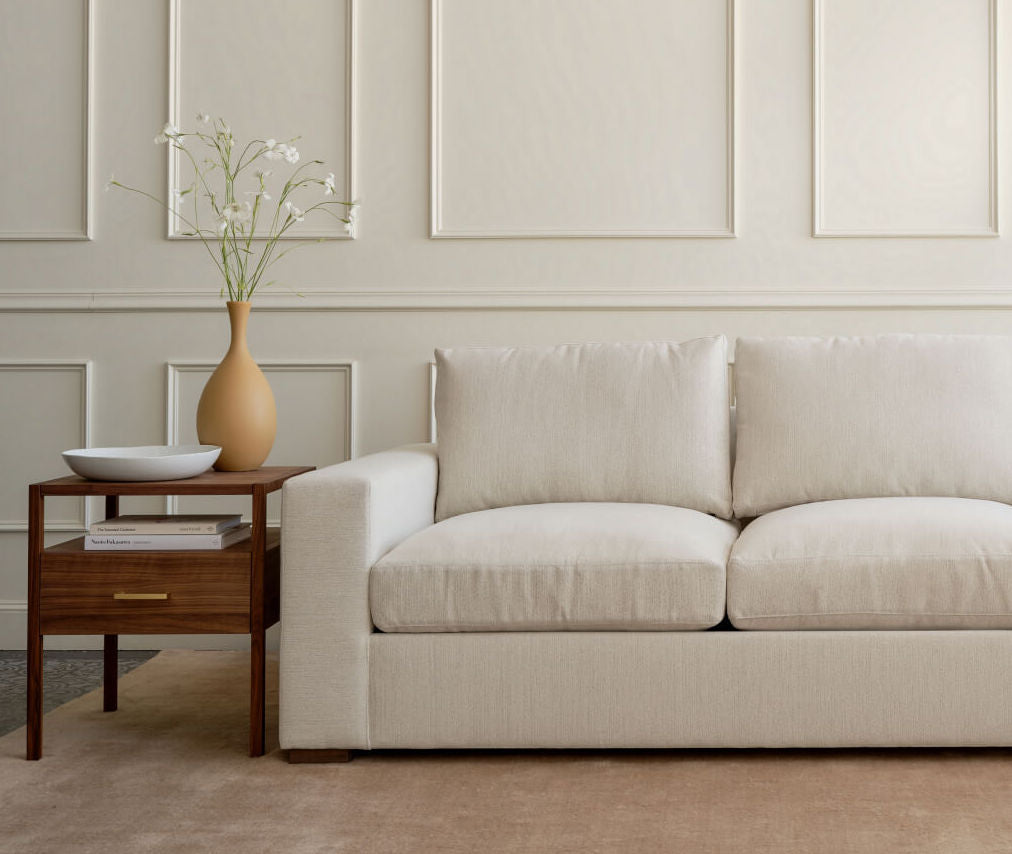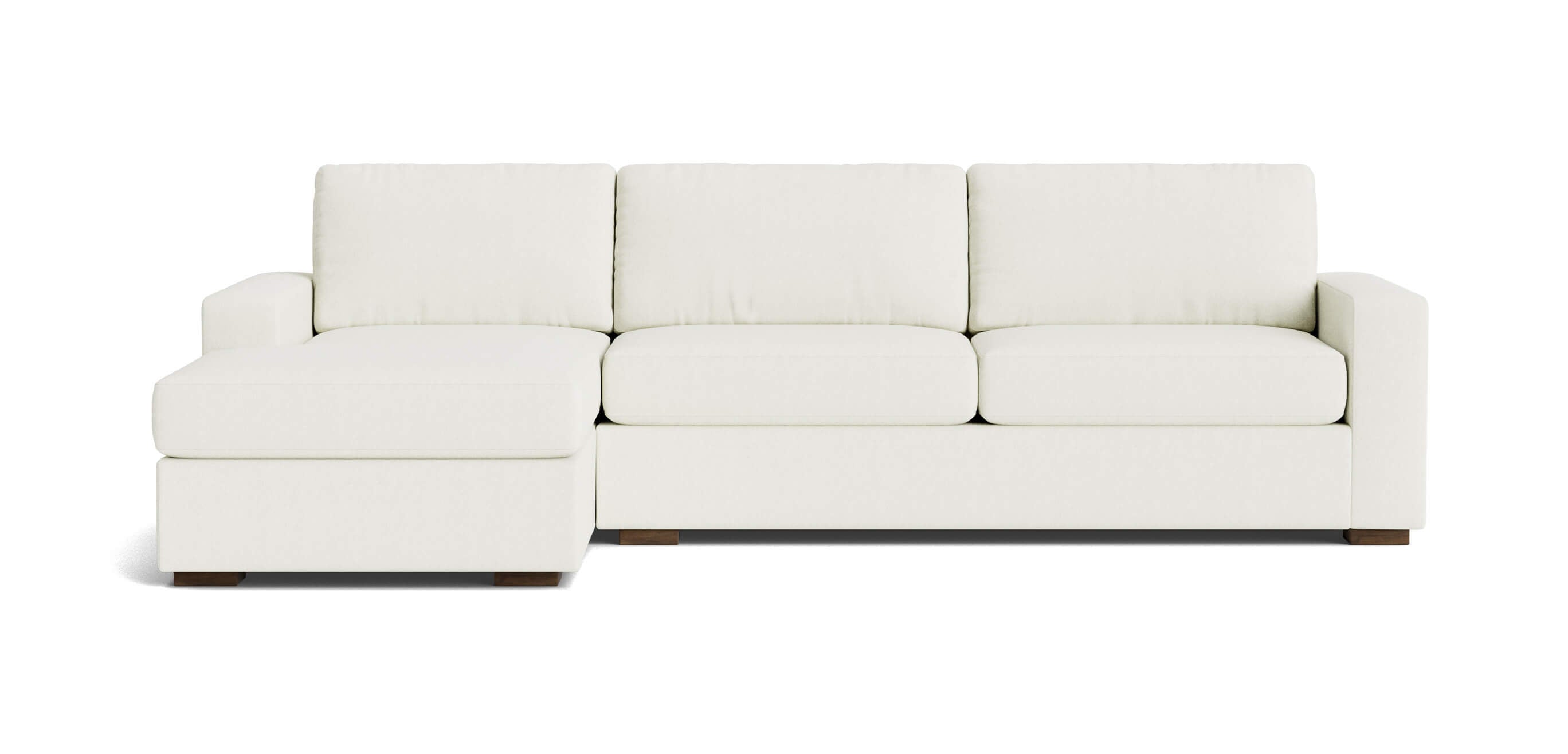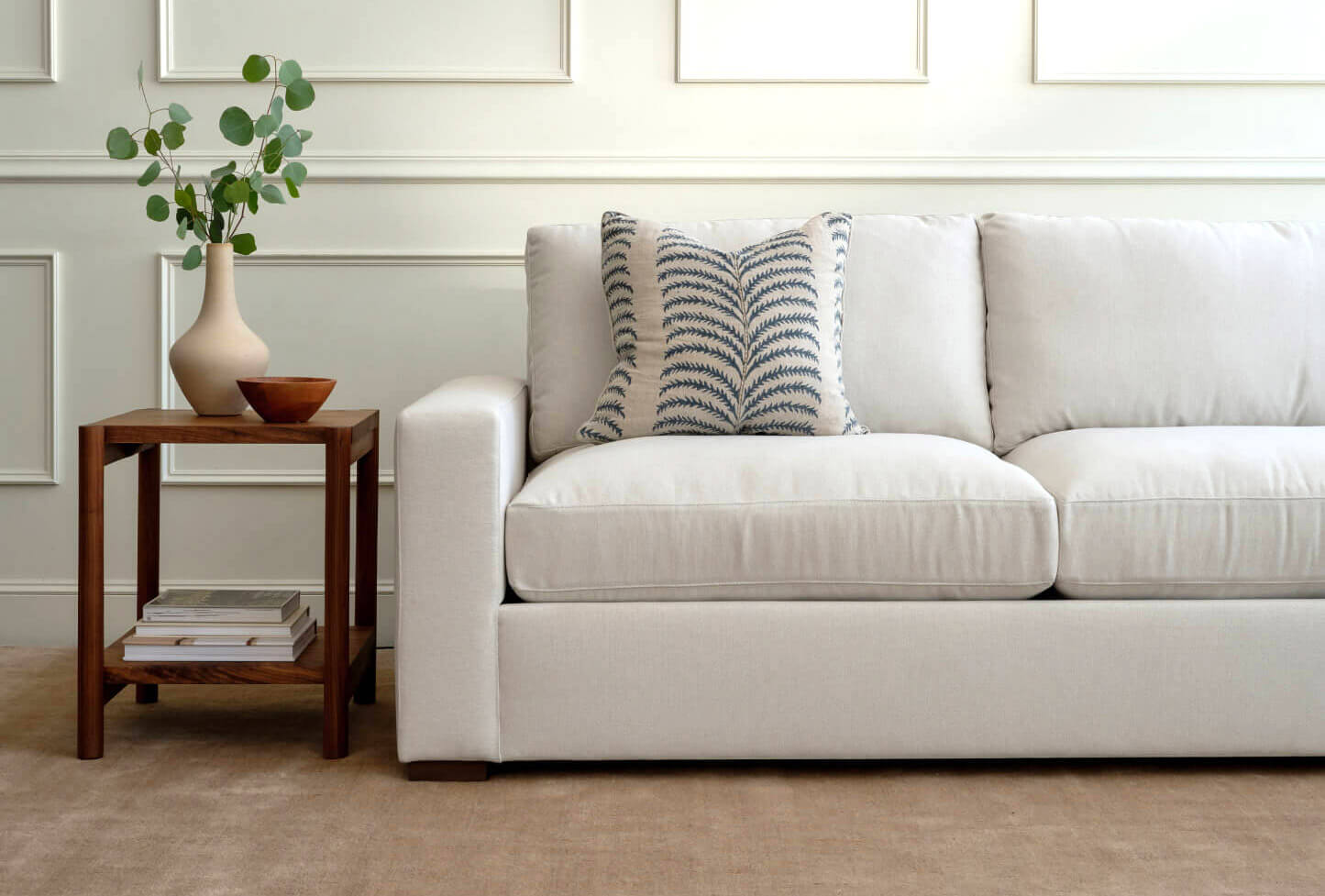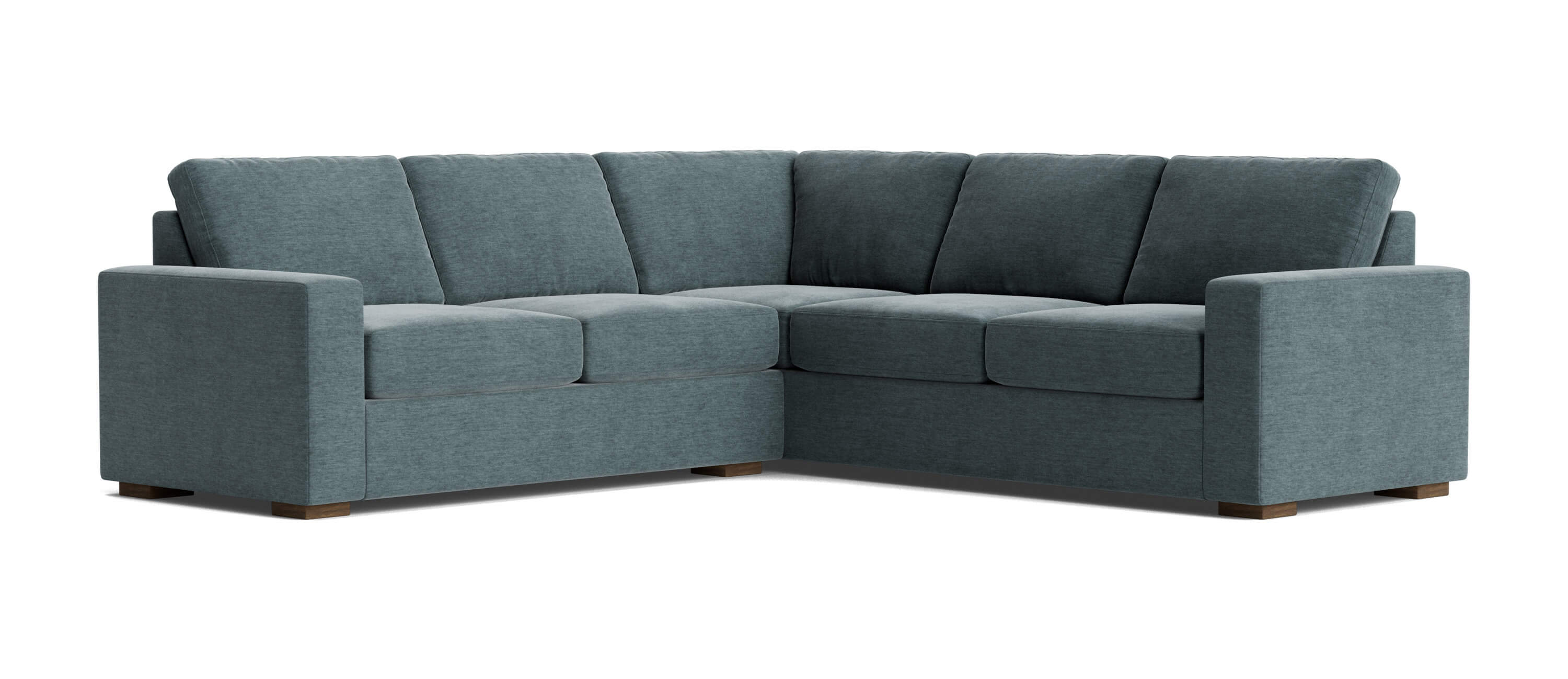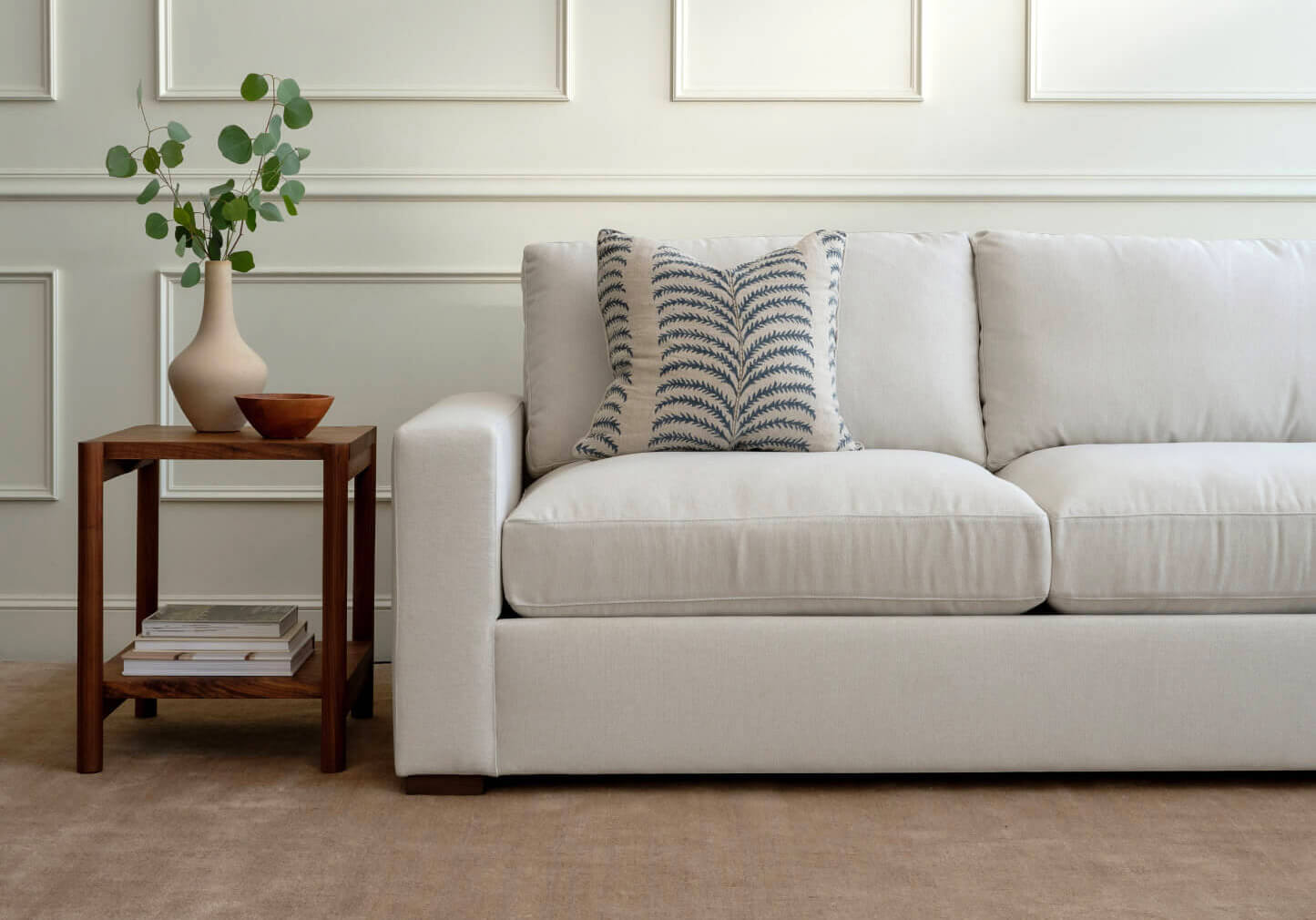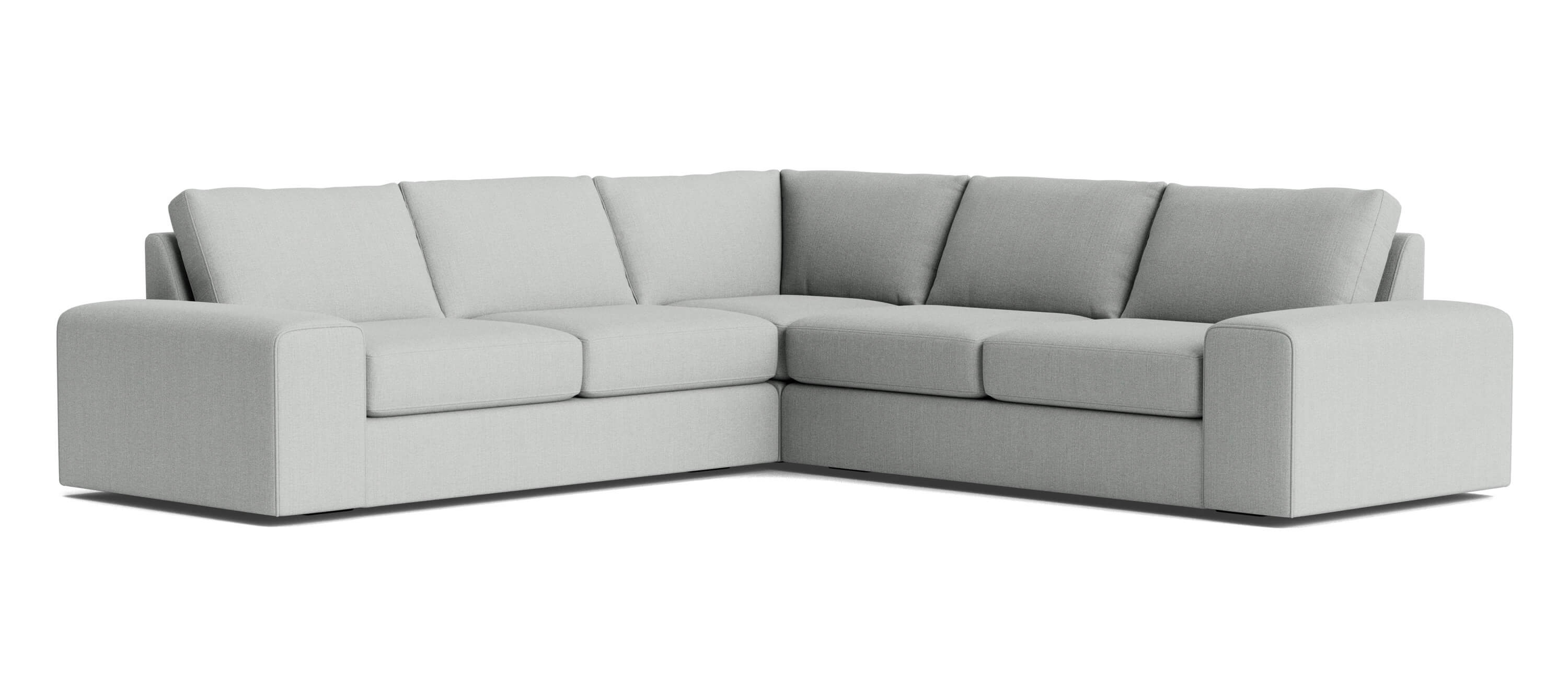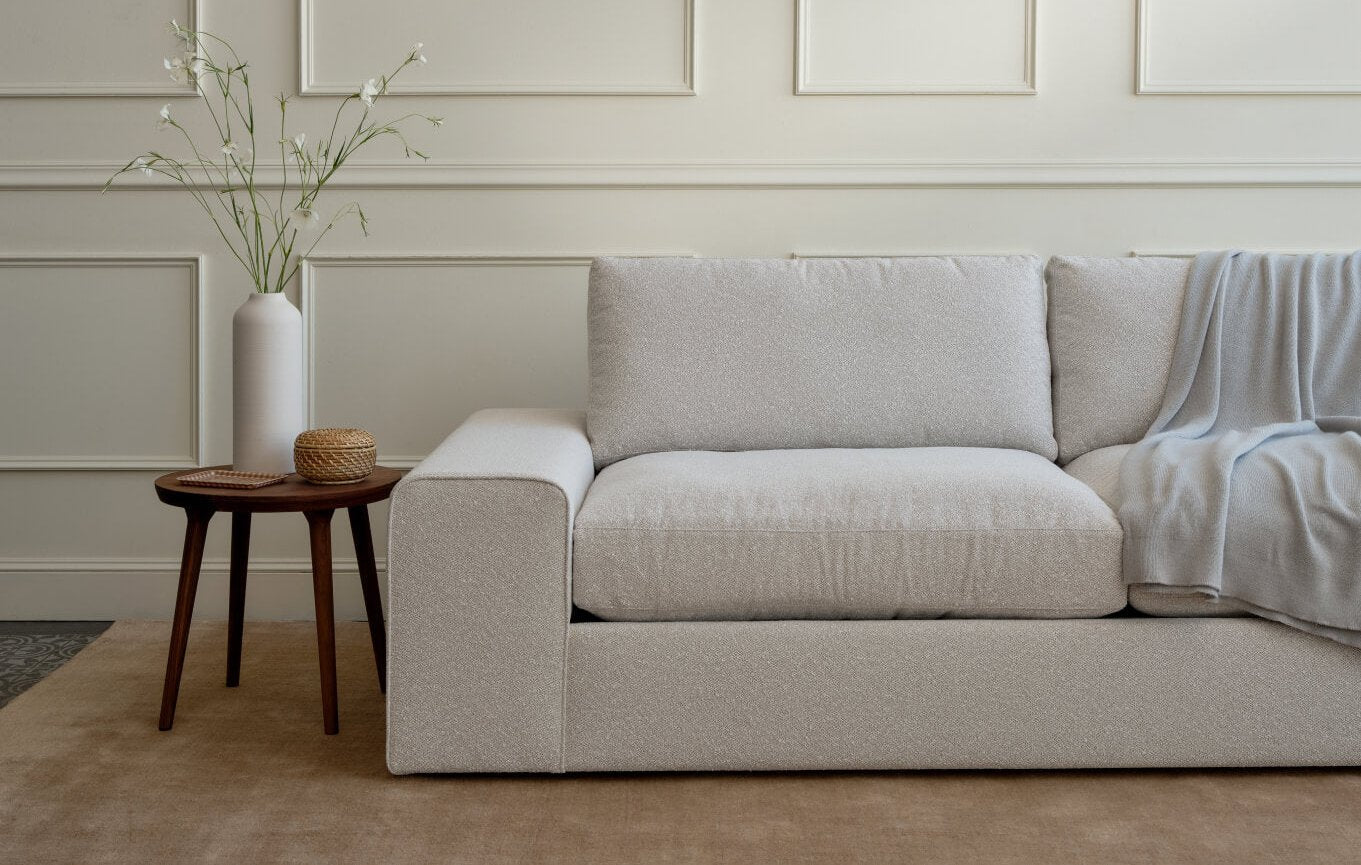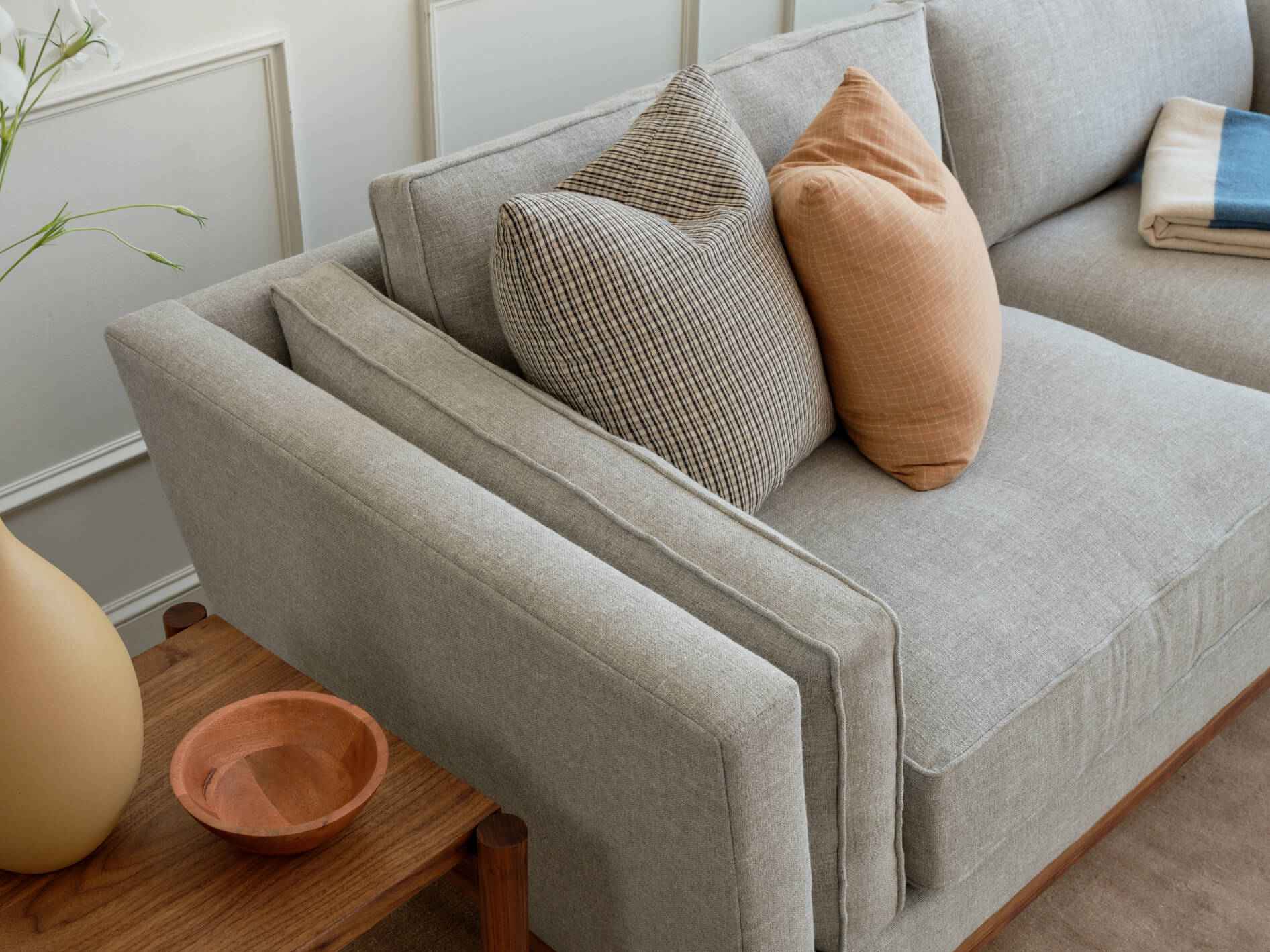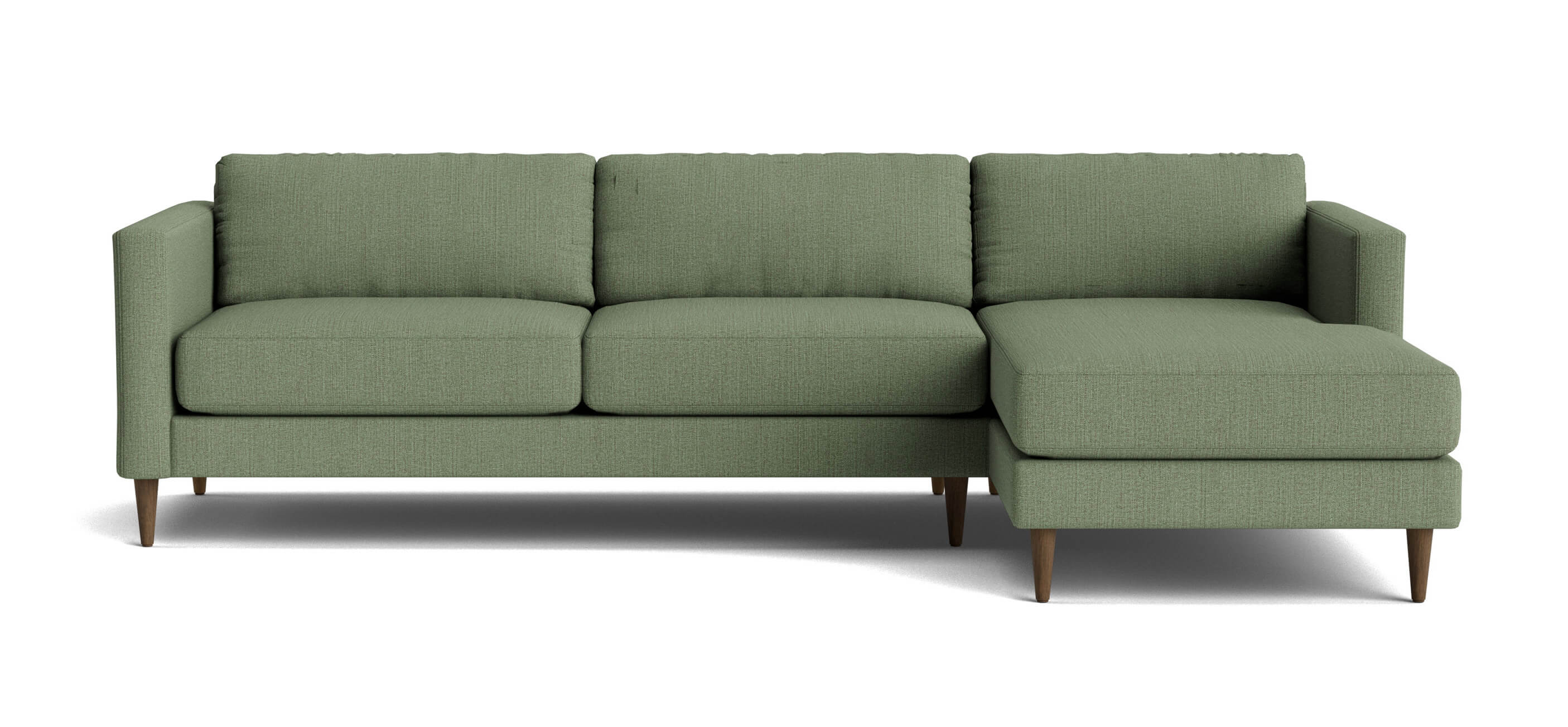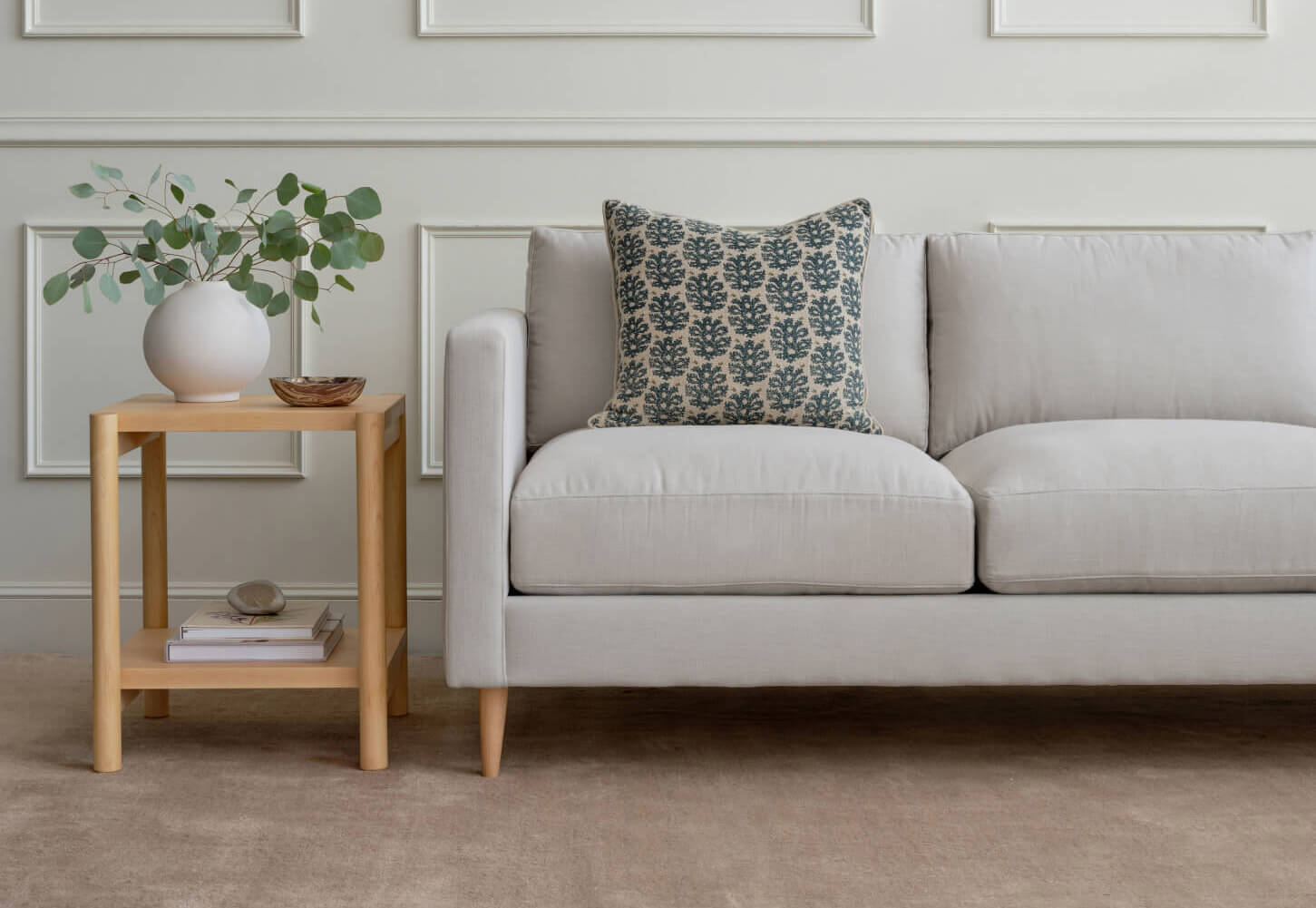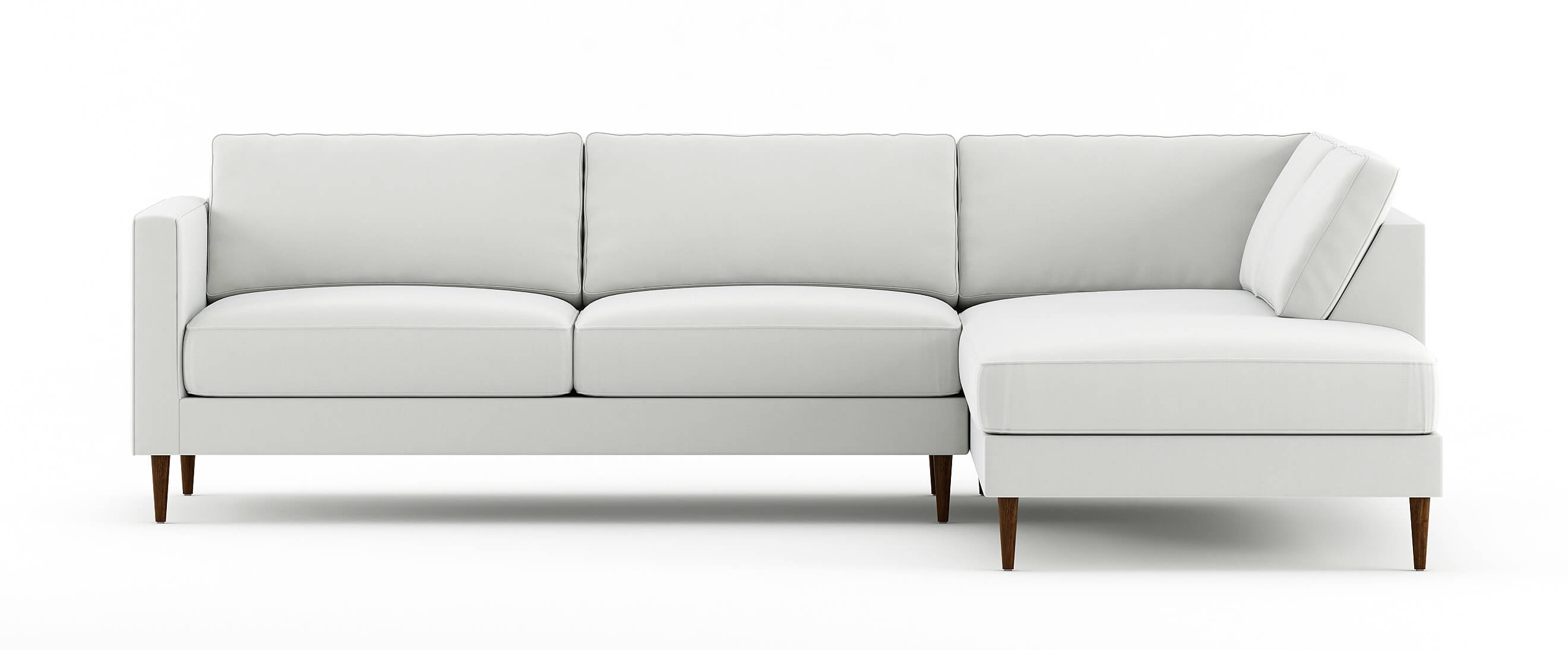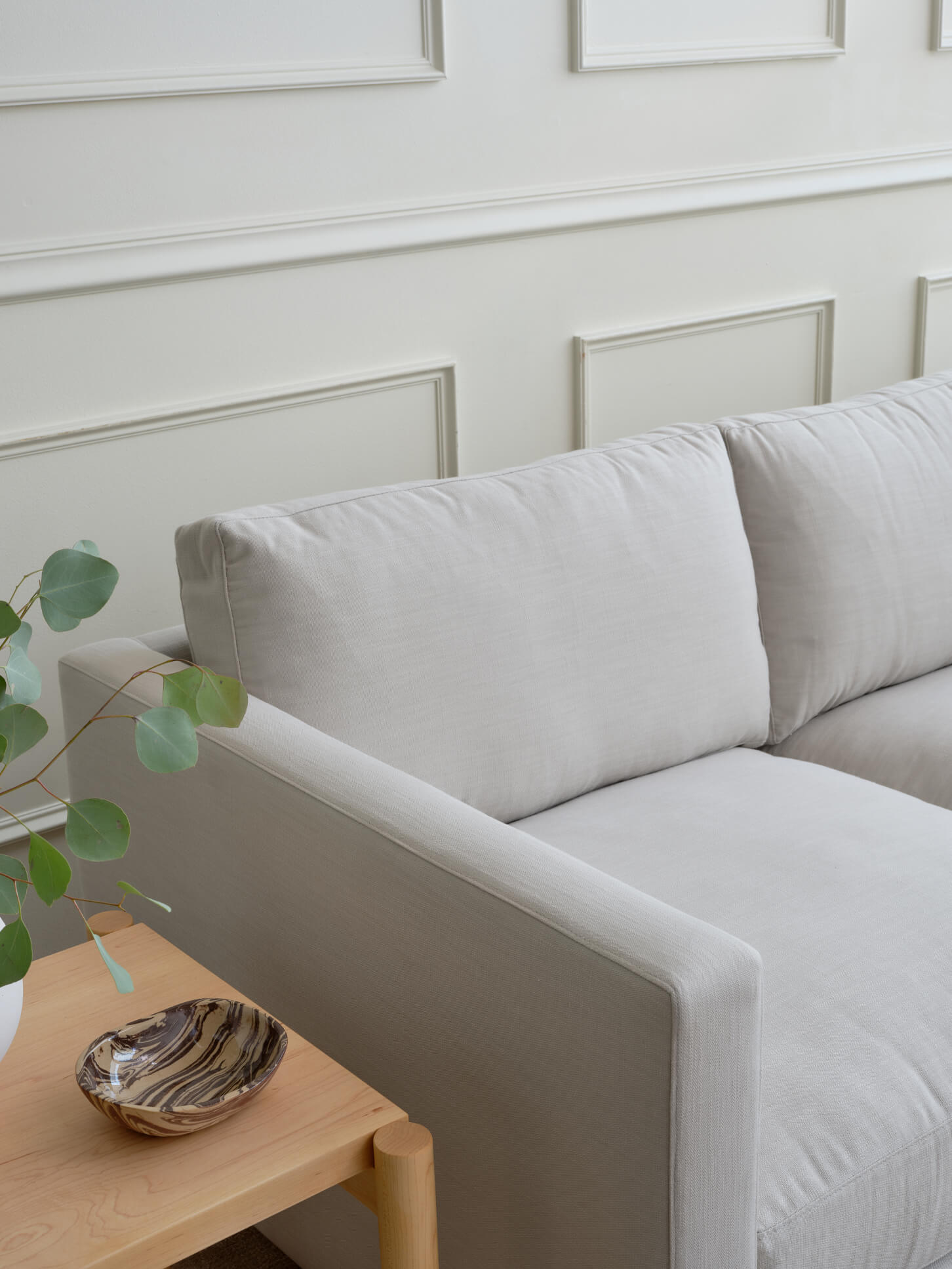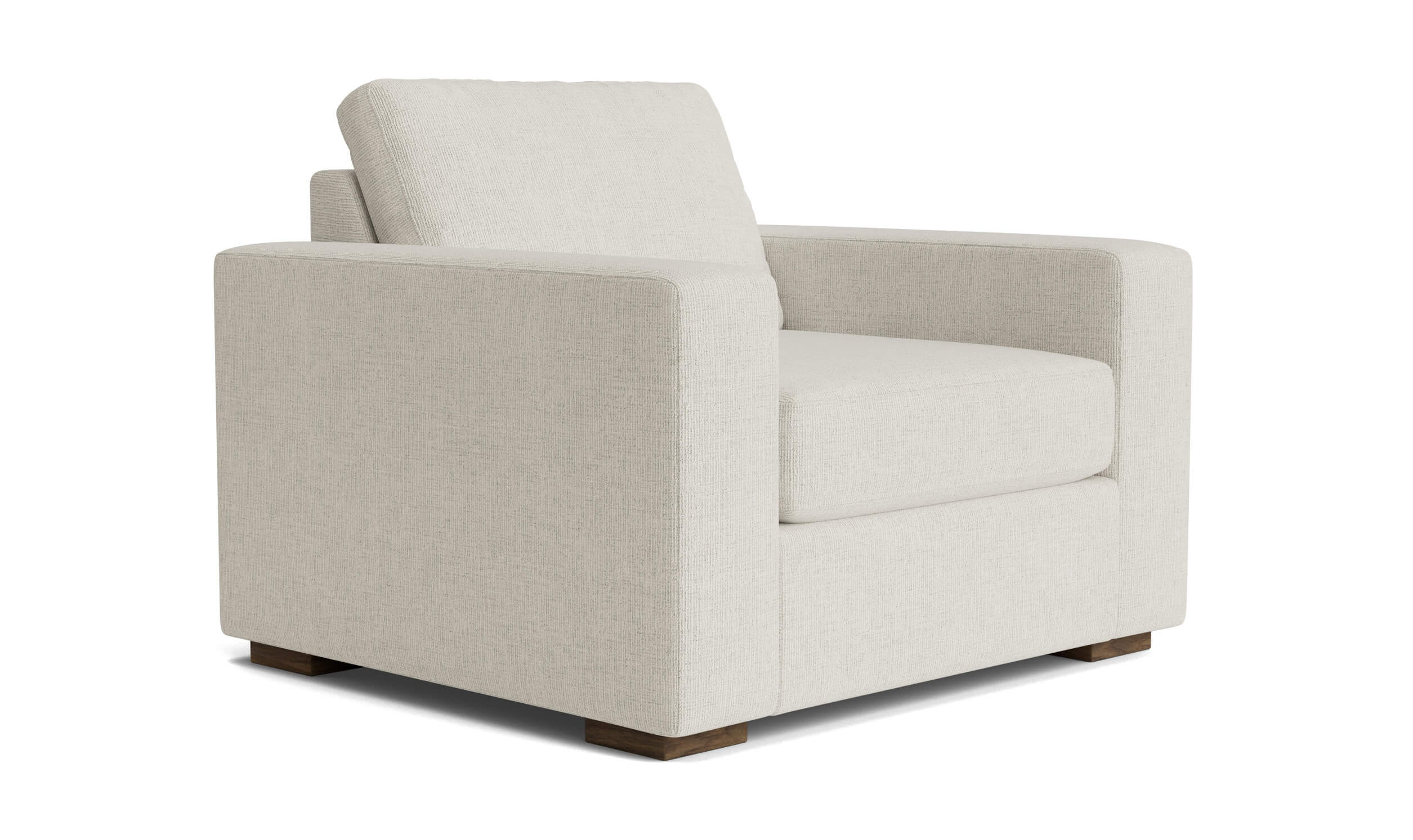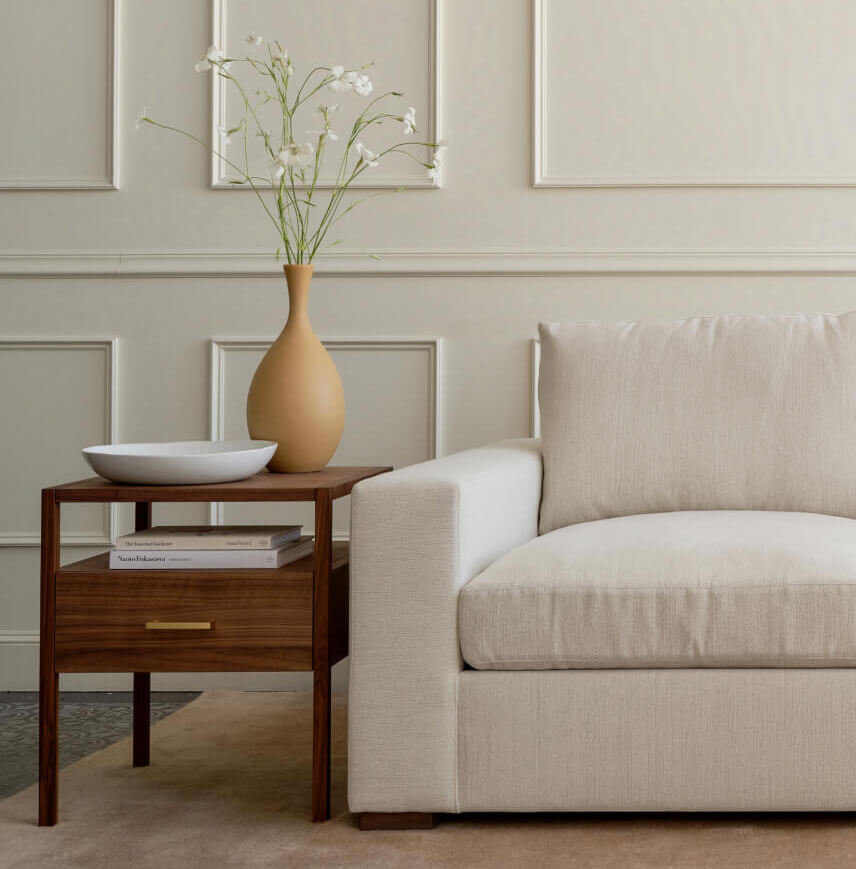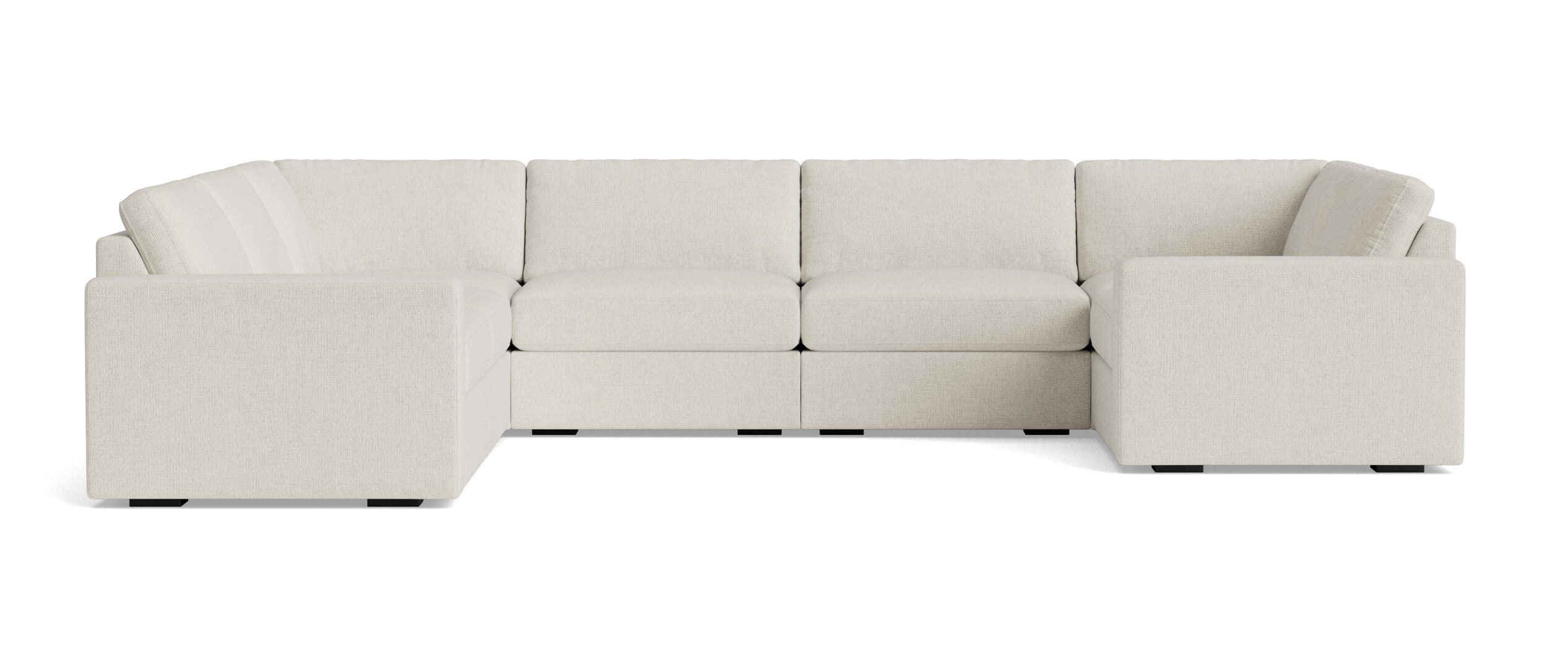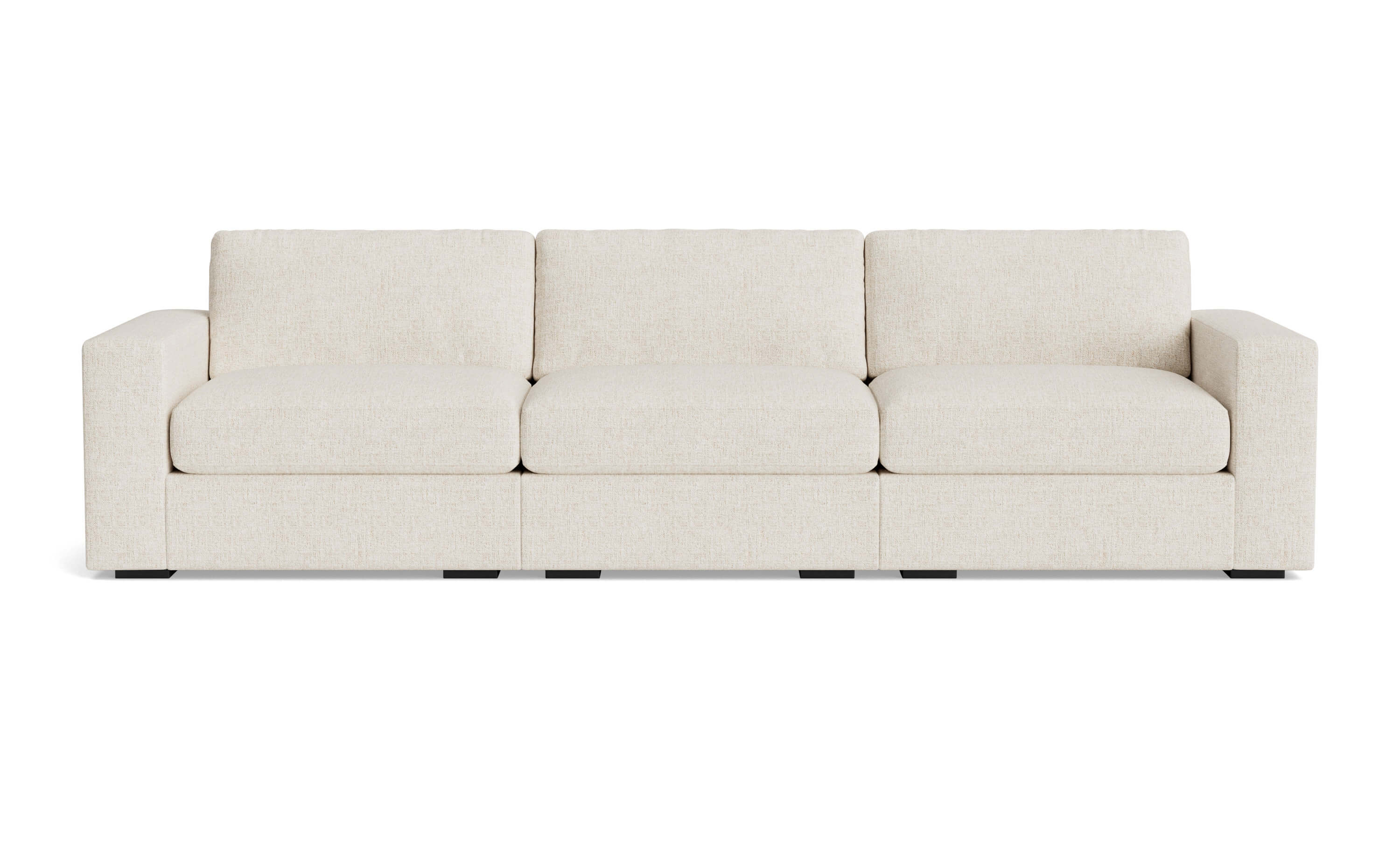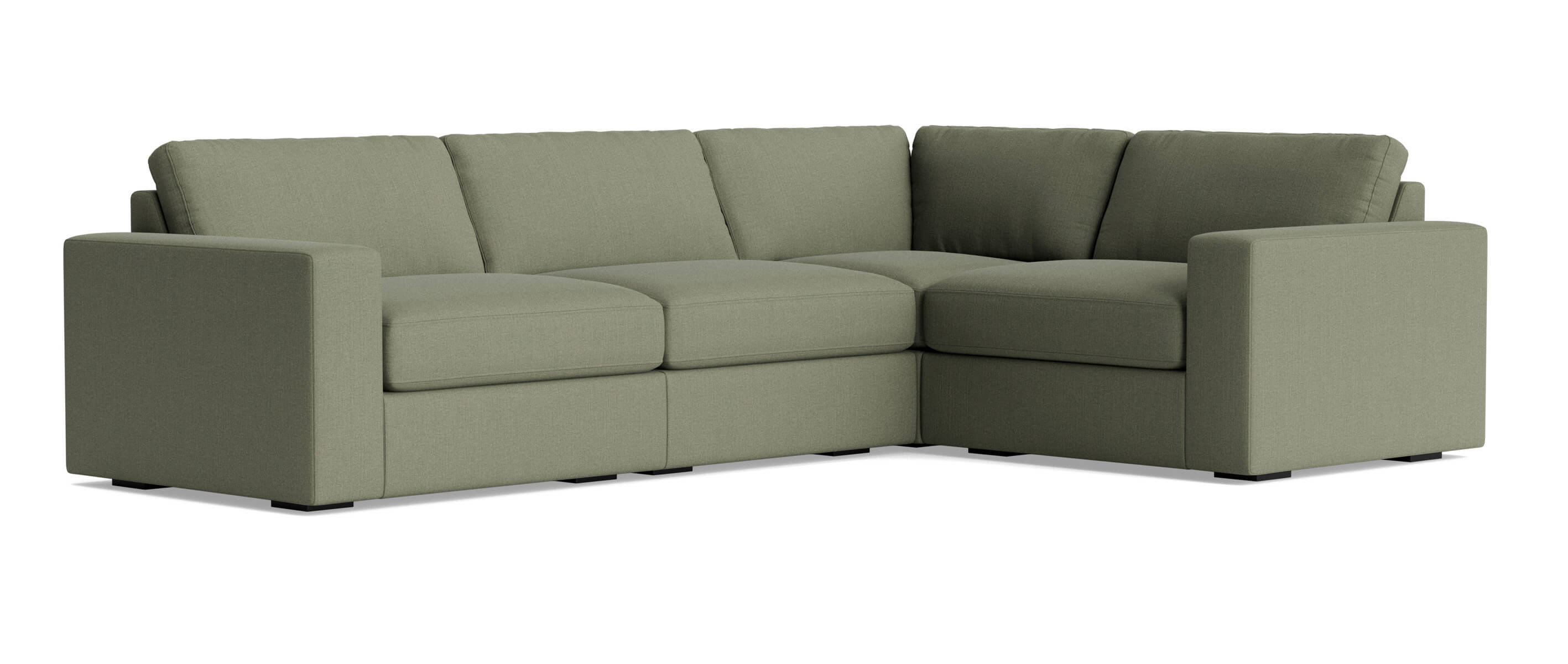
Pictured: Rio Chaise Sectional
The last thing you want is a sofa that’s the wrong size. Too small and you won’t have the space you need for Netflix binges and afternoon naps. Too big and you’ll block traffic and run out of space. So how do you find the right fit? We’ve gathered some key considerations to help.
{{ theme_section_1 }}
1. Measure for easy traffic flow
The ideal size of your sofa depends in part on the size of your room (a sofa that gets in the way will end up being a regrettable purchase, no matter how beautiful it is). Being able to move freely around your sofa will impact how your entire space feels.
Start by creating a rough mockup of your future sofa in your existing space: cut a large piece of butcher paper or cardboard and lay it out on your floor to get a sense of the maximum length and depth your furniture can occupy.
You should be able to move comfortably around it, get to the door, and fit all necessary furniture: if you have a coffee table you want to work around, a good distance is about 14"-19” away from your sofa. Other furniture should be between 30"-36” away for ample walking space. Don’t forget to measure the length or height of your elevator if you’ll need to use it to get the sofa into your space!

2. Consider how you’d like to lounge
How do you plan on using your sofa? This will absolutely help in determining its size and back height. If you’re furnishing a sitting room designed for conversation or need more back support, a more upright couch could be perfect. But if you'll use your sofa for napping, lounging, and family movie nights, you might prefer something deep and comfy.
Depending on what you're looking for, you might also consider opting for a sectional over a sofa to give yourself more space (and more room to pile on the crew). Sectionals are also great for open floor plans and can be an excellent way to divide a room into zones (just make sure the sectional doesn’t block traffic).
3. Find your seat depth fit
Finding the right seat depth starts with thinking about how you like to sit. Do you mostly sit with your feet on the floor, or do you like to tuck your legs in?
If you like to sit upright, you'll likely respond well to a seat depth that supports your thighs, keeps your knees bent at a 90-degree angle, and allows your feet to comfortably touch the floor. For a person between 5'4 and 5'10, a seat depth of 21" to 22" will allow plenty of clearance between the legs and the front edge of the seat. For a taller person, a seat depth of 23" to 25" is a good option, and for a smaller person, a seat depth of about 20" could work well.
If you like to curl up rather than sit straight, you'll benefit from some extra room—a deeper sofa of would be a great choice here. You can start by adding a few inches to the standard measurements listed above; if you plan to add a lot of accent pillows, you can go a little deeper and factor that extra support in.
Tip: our comfort guide compares our collections by dimension and lounginess.

Pictured: Lala Sofa
4. Match your seat height
When a sofa's seat height is really off, taller folks can feel as though they are simply squatting instead of sitting, while those on the shorter side might find their legs dangling above the floor.
A general rule is that the deeper the seat depth, the lower the seat height needs to be and vice versa. Sofa seat heights can vary, but a standard range is typically between 15" and 20" from the floor to the top of the cushion, with an average range falling between 18" to 19".
Next, consider the seat height of any other seating in your space—ideally you'll want that to match or be no more than 1-2" different than your sofa.
Finally, consider the height and size of your space. If you have 8' ceilings, you might opt for a lower sofa to give the impression of a taller ceiling. Alternatively, tall rooms look great with taller sofas. If you’re considering a sectional, a lower back may feel less imposing, especially if the piece won’t sit against a wall.
More Resources
If you're looking for more advice, check out our comfort guide to compare our collections, or schedule a chat with one of our furniture stylists.
Also, head to our swatches page to order free fabric samples—from cozy velvets to breezy linens, you'll make your vision of comfort all the more real.
Shop Natural Latex Sofas
Shop Natural Latex Mattresses


